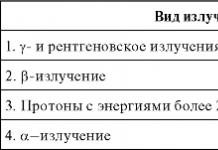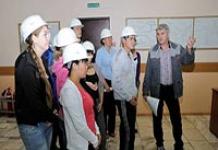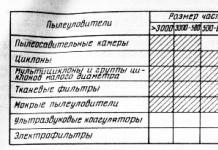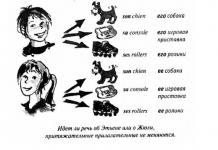By the XXI century, man has achieved a lot: he is surrounded by roads, skyscrapers, cars, functional devices. These things, however, cannot completely alienate people from nature, powerful and rebellious, it will always have an impact on society. A person can only learn to predict her behavior and build his plans in accordance with it. For this purpose, environmental monitoring was specially created.
What do we know about the word "monitoring"?
The word "monitoring" originated in Latin, then migrated to English, and later became established in the Russian dictionary. So, monitor means “reminding”, “supervising”, “warning” and is interpreted as a whole complex of regular observations, assessments and forecasts of an object, in order to control and, if possible, optimize the processes taking place with its participation.
And what is environmental monitoring?
If we are talking about environmental monitoring (hereinafter referred to as MOS), then it is clear that the object of research in this case will be nature and its state, as well as changes occurring in it both naturally and as a response to human activity.
Where did this concept come from?
Officially, what is environmental monitoring was decided in 1971 at a UNESCO meeting before the 1972 UN Stockholm Conference, which was precisely devoted to this issue. It was then that the term was first used.

However, in the world, professional tracking of fluctuations in climate, weather, its phenomena was carried out long before that - about a hundred and a half years. These include the well-known meteorology, seismology and other types of observations and measurements. In our time, the range of research is rapidly expanding, the number of measured parameters is growing, and a network of special stations is developing. At the same time, there is an assertion by those involved in environmental monitoring that these activities, along the way, complicate problematic issues that require immediate resolution.
Monitoring one or several of them?
Monitoring can be very diverse; to create a complete picture of a given subject, it will be useful to get acquainted with its various types.
Based on the goals and objects, they distinguish sanitary and hygienic, environmental and climatic monitoring.
1. The sanitary-hygienic one is primarily concerned with monitoring environmental pollution and comparing its quality with the hygienic standards of MPC (maximum permissible concentrations), identified for the protection, health and protection of a favorable living environment of the population.
2. Environmental monitoring plays an important role in the global environmental monitoring system. It focuses primarily on renewable resources and analyzes the anthropogenic impact on ecosystems and their response to human stimuli. This is the main purpose of this type of monitoring. The task is to study the typical, most common response effects not of individual organisms, but of their communities (ecosystems).

This type of monitoring includes the following types of control:
For atmospheric air. It is characterized by the fact that a complex of program observations is aimed at accumulating data for their subsequent evaluation and use as a basis for predicting possible changes in the future.
Behind the hydrosphere. Its peculiarity is that it monitors the state of affairs in waters of different levels, we are talking about surface and underground.
Behind the lands (soils). Observations are carried out over the state of land cover and soil composition, in accordance with which decisions are made on measures to protect the land from the negative impact of external factors.

For radiation. Accordingly, the status and conditions of the radiation background are assessed.
3. Climate monitoring is an environmental service that, as usual, is engaged in monitoring and forecasting changes and climate fluctuations. It looks like an ecological one, but the subject of its jurisdiction is not within the entire biosphere, but only in that part that affects the formation of the climate. As you know, these are the atmosphere, surface waters, snow masses, etc. Climate monitoring is closely related to hydrometeorological observations.
Other classifications of monitoring can also be cited.
So, depending on the scale, there are:
- Biosphere, it is also global. It monitors general global processes in the biosphere of the planet in order to predict and warn of emerging emergencies and extreme threats.
- Impact. Works at a smaller scale - local points (district or even an enterprise). Informs about anthropogenic influences (industrial facilities or individual sources) and emergency situations (in the event of disasters, accidents, disasters, epidemics).
- Biological. Narrowly focused observation of biological resources - plants and animals. Bioindicators are used for these measures. Research is carried out on the territories of reserves or in other protected areas.
Environmental monitoring
A prerequisite for high-quality management of environmental properties is the correct organization of the monitoring system.
The MOS system includes four main blocks:
- Observation (this means obtaining data on the general state of objects under observation). They are carried out at regular intervals, at clearly defined intervals, which is very important to get a complete and clear picture. Observations can be made both by individual stations (pointwise), and by their whole network. In order to separate anthropogenic and natural (natural) modifications from each other, it is necessary to store data for past years for comparison with previous indicators. This will make it possible to more accurately calculate the intensity of processes and predict their consequences.
- Assessment of the present state. The information obtained from the previous stage is analyzed by specialists who are able to determine with high accuracy the degree of deterioration or, conversely, the well-being of the object's state, to establish the reasons for this, to outline the tendencies for the subsequent variation of its state.
- Condition forecast. At this stage, not only the future is assumed, but also attempts are made to support the hypotheses with certain evidence (calculations, indicators, etc.).
- Assessment of the forecast. The results are evaluated again and then conveyed to the audience in one format or another.

GEMS
The authorities responsible for the country are most concerned about the state of the environment, they are the ones who organize activities for the study and protection of nature in order to provide citizens with comfortable living conditions. Such activity in government structures is usually called state environmental monitoring (GEMOS).
Legal regulation of GEMOS
Being extremely important, this activity of the state is fully regulated by the legislation of the Russian Federation. This area is devoted to such legal acts as the Federal Law "On Environmental Protection", the Water and Forest Codes, the Federal Law "On the Protection of Atmospheric Air" and a number of others.
In addition, all natural resource and other regulatory legal acts have regulatory clauses on MOS. For example, sanitary and epidemiological supervision bodies carry out their work on social and hygienic monitoring, on the basis of the Regulation on such monitoring.
Who carries out environmental monitoring in Russia
The legislator has exhaustively established the subjects that organize and carry out environmental monitoring of the environment in Russia. First of all, the entire system of authorized bodies is headed by the Government of the Russian Federation. Its structure includes the Ministry of Natural Resources of the Russian Federation, the Ministry of Agriculture of the Russian Federation and their subordinate federal environmental monitoring services and agencies competent in the area under consideration. For example, these include: the Federal Service for State Registration, Cadastre and Cartography; The center for environmental monitoring and hydrometeorology is the Federal Service of the Russian Federation of the same name, including Rybnadzor, as well as other government authorities.
What is environmental monitoring in the Russian Federation
At the state level, GEMS is designated, firstly, as an integrated system for monitoring the natural environment and its state, assessing and predicting its changes under the influence of factors of natural and anthropogenic properties. And secondly, as environmental monitoring carried out by federal government bodies and the authorities of the subjects.
From the history
The activities on GEMS began in the 30s back in the USSR. Then, in connection with the problem of water consumption, research and control of surface and underground water bodies were relevant.
In the 50s, the first tests of nuclear weapons were carried out, so it became necessary to identify and organize the fight against radiation pollution of the natural environment.
1972 was marked by the creation of a number of special organizations, departments and services performing similar functions of environmental monitoring, so their preservation in the renewed Russia was considered inappropriate. Therefore, in 1993, the Unified State System of Environmental Monitoring of Russia (EGSEM) was created, and ensuring the safety and protection of the environment was set as the main goal. The tasks were observation, storage and processing of information about the status of the environment, as well as research and comprehensive analysis of the identified data and subsequent informing of citizens and stakeholders in this area. However, this attempt turned out to be weak, the environmental monitoring system survived only until 2003. Since her concept stopped in development, and the goal was not achieved. To date, there is a new decision of the Government of the Russian Federation on the organization and implementation of GEMS.
Environmental monitoring functions in the Russian Federation
Among the large number of them, the main ones can be distinguished:
- Monitoring the state of the environment in the locations of the factors of anthropogenic influence.
- Analysis, assessment and identification of trends in modifications of the state of the natural environment under the influence of both biological and anthropogenic phenomena.
- Meeting the needs of the state as a whole, its officials, organizations and citizens with complete, competent, reliable information about the state of the natural environment. This is important because it is necessary to prevent or reduce the negative consequences of adverse changes.

Features of the organization of GEMS in the Russian Federation
A certain Soviet tempering in Russia led to the construction of a GEMOS, the activities of which are strictly regulated. In our country, GOSTs (state standards), SanPiNs (sanitary norms and rules), RD (governing documents) and OND (all-Union normative documents), adopted in the days of the USSR, are in force. State ecological monitoring of the environment is carried out with the help of special observation stations connected to the network and information resources of the state data fund (hereinafter - GFD). The named elements are parts of the USEM.
State data fund
For the implementation of better and more mobile monitoring, the GFD is of great importance. It must be said that until 2013, many competent authorities carried out environmental control in the country. As a result, the research data were isolated separately at the locations of ministries, services and departments, and their interchange is difficult.

The salvation was the creation of such a valuable resource as a fund. This is a unified information system where all the data obtained during monitoring is collected, which, of course, solved the above problem.
The state of the environment, respectively, of the habitat, is constantly changing. These changes are different in nature, direction, size, unevenly distributed in space and time. Natural, natural, changes in the state of the environment have a very important feature - they usually occur around some average relatively constant level. Their average values can change significantly only over long periods of time.
Technogenic changes in the state of the environment, which have become especially significant in recent decades, have a completely different feature. Technogenic changes in some cases lead to a sharp, rapid change in the average state of the natural environment in the region.
To study and assess the negative consequences of anthropogenic impact, it became necessary to organize a special system of control (observation) and analysis of the state of the environment, primarily due to pollution and the effects caused by them in the environment. Such a system is called an environmental monitoring system, which is part of a universal environmental monitoring system.
Monitoring is a set of measures to determine the state of the environment and track changes in its state.
The main tasks of monitoring are:
- * systematic monitoring of the state of the environment and sources affecting the environment;
- * assessment of the actual state of the natural environment;
- * forecast of the state of the environment and assessment of the predicted state of the latter.
Taking into account the designated tasks, monitoring is a system for observing, assessing and forecasting the state of the environment.
Monitoring is a multipurpose information system.
Monitoring the state of the environment includes monitoring the sources and factors of technogenic impact (including sources of pollution, radiation, etc.) - chemical, physical, biological - and the consequences of these impacts on the environment.
Observation is carried out according to physical, chemical and biological indicators. Integral indicators that characterize the state of the environment seem to be especially effective. This implies obtaining data about the initial (or background) state of the environment.
Along with observation, one of the main tasks of monitoring is to assess trends in changes in the state of the environment. Such an assessment should answer the question about the unfavorable situation, indicate what exactly is the reason for such a state, help determine actions aimed at restoring or normalizing the situation, or, conversely, indicate especially favorable situations that make it possible to effectively use the existing ecological reserves of nature in the interests of man. ...
Currently, the following monitoring systems are distinguished.
Environmental monitoring is a universal system, the purpose of which is to assess and forecast the reaction of the main components of the biosphere. It includes geophysical and biological monitoring. Geophysical monitoring includes determining the state of large systems - weather, climate. The main task of biological monitoring is to determine the reaction of the biosphere to technogenic impact.
Monitoring in different environments (different environments) - including monitoring of the surface layer of the atmosphere and the upper atmosphere; monitoring of the hydrosphere, i.e. surface waters of the land (rivers, lakes, reservoirs), waters of the oceans and seas, groundwater; monitoring of the lithosphere (primarily soil).
Monitoring of exposure factors is the monitoring of various pollutants (ingredient monitoring) and other exposure factors, which include electromagnetic radiation, heat, noise.
Monitoring of human habitats - including monitoring of the natural environment, urban, industrial and domestic human habitats.
Monitoring by scale of impact - spatial, temporal, at various biological levels.
Background monitoring is a basic type of monitoring, which aims at knowing the background state of the biosphere (both at the present time and in the period before the noticeable human influence). Background monitoring data is required to analyze the results of all types of monitoring.
Territorial monitoring - including systems for monitoring technogenic pollution, the classification of which is based on the territorial principle, since these systems are the most important component of environmental monitoring.
There are the following systems (subsystems) of territorial monitoring:
- * global - held all over the globe or within one or two continents,
- * state - held on the territory of one state,
- * regional - held on a large area of the territory of one state or adjacent areas of several states, for example, the inland sea and its coast;
- * local - held in a relatively small area of a city, water body, area of a large enterprise, etc.,
- * "point" - monitoring of pollution sources, which is, in fact, impact, as close as possible to the source of pollutants entering the environment,
- * background - the data of which is needed to analyze the results of all types of monitoring.
The classification of monitoring systems according to the territorial principle is shown in Fig. 1.
Global monitoring. In 1971, the International Council of Scientific Unions for the first time formulated the principles of building a global system for monitoring the state of the biosphere and defined indicators for which constant monitoring and control should be established. UN Environment) in 1973-1974. the main provisions for the creation of the Global Environment Monitoring System (GEMS) were developed.
Rice. 7.1.
At the meeting in Nairobi (1974) the following tasks of the GEMS were defined:
- - organization of an expanded warning system about a threat to human health;
- - assessment of global air pollution and its impact on climate;
- - assessment of the amount and distribution of biosphere pollutants, especially food chains;
- - assessment of the response of terrestrial ecosystems to environmental pollution;
- - assessment of ocean pollution and its impact on marine ecosystems;
- - creation and improvement of the system of warning about natural disasters on an international scale.
State monitoring. Since 1994 in the Russian Federation it has been carried out within the framework of the Unified State System of Environmental Monitoring (EGSEM).
The tasks of the EGSEM:
- - development of programs for monitoring the state of the environment;
- - organization of observations and measurements of indicators of objects of environmental monitoring;
- - ensuring the reliability and comparability of observation data;
- - organization of data storage, creation of specialized data banks;
- - harmonization of banks and databases of environmental information with international environmental information systems;
- - assessment and forecast of the state of the environment, anthropogenic impact on it, responses of ecosystems and public health to changes in the state of the environment;
- - organization and implementation of operational control and precision measurements of radioactive and chemical contamination in accidents and disasters, forecasting the consequences and assessing the damage;
- - ensuring the availability of integrated environmental information to a wide range of consumers (central and local government, departments and organizations, the population);
- - information support of the bodies of management of the state of the environment, natural resources and ecological safety;
- - development and implementation of a unified scientific and technical policy in the field of environmental monitoring.
Regional monitoring. On the territory of large regions of large states, for example, such as the Russian Federation, USA, Canada, etc., regional monitoring is organized. It is not only a part of state monitoring, but also solves problems specific to this territory. The main task of regional monitoring is to obtain more complete and detailed information on the state of the region's environment and the impact of the technogenic factor on it, which is not possible to do within the framework of global and state monitoring, since their programs cannot take into account the specifics of each region.
Local monitoring. This monitoring is an integral part of the regional and is organized to solve problems of an exclusively local scale.
When organizing and conducting local monitoring, it is necessary to determine priority pollutants, which are already being monitored within the framework of global, state and regional monitoring (or at least most of them), as well as pollutants from existing sources of pollution or on the basis of studying technological regulations (projects) created productions.
Based on the results of local monitoring, the relevant competent authorities may suspend the activities of enterprises that lead to excess pollution of the environment until the emergency situation and its consequences are eliminated or the technological process is improved, eliminating the possibility of pollution. In special cases, the question of the complete closure of the enterprise, its re-profiling or transfer to another locality may be raised.
"Spot" monitoring. It is a constant or episodic observation of a specific object - a source of pollution and the fixation of quantitative parameters of the environment (OS) at the point (zone) of the primary contact of the environment with the source. In fact, monitoring of the source of pollution is closely related to the production (technical) control of technological or other technogenic processes "open" to the external environment, as well as the corresponding objects of observation (object "point" control).
Pollution source monitoring (MPM) can be an integral part of the local environmental monitoring subsystem, or it can include only elements of object production control, which is almost completely closed to the technology, its processes and devices.
The organization of monitoring of pollution sources at facilities is carried out in order to obtain operational and systematic information about the state of the environment, primarily to ensure the technological and environmental safety of the controlled facilities themselves, with the priority of issues of safety and comfort of the working conditions of the personnel working on them.
The criminal legislation of the Russian Federation reflects a concept that considers the natural environment not as a "storehouse" of natural resources, which must be protected from looting, but as the biological basis for the existence of man and all life on Earth. It also reflects the priority of protecting the interests of the individual over the interests of society and the state.
From these positions, environmental crimes can be considered as crimes against humanity, health, constitutional right to a favorable natural habitat through the impact on the surrounding nature. Views on the degree of public danger of these encroachments are also changing, which is reflected in the sanctions provided for by the Criminal Code of the Russian Federation (Criminal Code of the Russian Federation).
Thus, a whole area is presented in the criminal legislation, which fully covers a very important area today - ecology. Many crimes that previously went unpunished are now quite harshly punished. This gives rise to some hope that the flurry of crimes against nature will be stopped.
The task of law enforcement agencies at the present stage is to widely and everywhere introduce new norms of criminal law into practice.
All of the above issues are far from exhausting the scope of the Russian legislation in the field of life safety. The scope of its application is constantly expanding. The subject of legal regulation covers all new relations in areas where it is required to ensure the safety of human life.
Information about the state of the natural environment, about changes in this state has long been used by man to plan his activities. For more than 100 years, observations of changes in weather and climate have been carried out regularly in the civilized world. These are all familiar meteorological, phenological, seismological and some other types of observations and measurements of the state of the environment. Now it is no longer necessary to convince anyone that the state of the natural environment must be constantly monitored. The range of observations and the number of measured parameters are becoming wider, and the network of observation stations is getting denser. The problems associated with environmental monitoring are becoming increasingly complex. natural pollution waste workshop
The term “monitoring” itself first appeared in the recommendations of the special commission SCOPE (Scientific Committee on Environmental Problems) at UNESCO in 1971, and in 1972 the first proposals for a Global Monitoring System for the Environment (Stockholm UN Environment Conference) appeared. However, such a system has not been created to this day due to disagreements in the volumes, forms and objects of monitoring, the distribution of responsibilities between the already existing observing systems. We have the same problems in our country, therefore, when there is an urgent need for routine monitoring of the environment, each industry must create its own local monitoring system.
Monitoring the environment is called regular, carried out according to a given program, observations of natural environments, natural resources, flora and fauna, allowing to identify their states and processes occurring in them under the influence of anthropogenic activity.
Under environmental monitoring it is necessary to understand the organized monitoring of the natural environment, in which, firstly, a constant assessment of the ecological conditions of the human environment and biological objects (plants, animals, microorganisms, etc.) is provided, as well as an assessment of the state and functional value of ecosystems, second, the conditions are created for determining corrective actions in cases where the target indicators of environmental conditions are not achieved.
The monitoring system should include the following basic procedures:
- · Selection (definition) of the object of observation;
- · Examination of the selected object of observation;
- · Drawing up an information model for the object of observation;
- · Planning of measurements;
- · Assessment of the state of the object of observation and identification of its information model;
- · Forecasting changes in the state of the object of observation;
- · Presentation of information in a user-friendly form and bringing it to the consumer.
The main goals of environmental monitoring are to provide the environmental management system and environmental safety with timely and reliable information that allows:
- · To evaluate the indicators of the state and functional integrity of ecosystems and the human environment;
- · Identify the reasons for changes in these indicators and assess the consequences of such changes, as well as determine corrective actions in cases where the target indicators of environmental conditions are not achieved;
- · Create prerequisites for determining measures to correct emerging negative situations before damage is caused.
Based on these three main objectives, environmental monitoring should focus on a set of indicators of three general types: compliance, diagnosis and early warning.
In addition to the above main goals, environmental monitoring can be focused on achieving special program goals related to the provision of necessary information on organizational and other measures for the implementation of specific environmental protection measures, projects, international agreements and obligations of states in relevant areas.
The main tasks of environmental monitoring:
- · Observation of sources of anthropogenic impact;
- · Observation of the factors of anthropogenic impact;
- · Monitoring the state of natural gray hair and the processes occurring in it under the influence of anthropogenic factors;
- · Assessment of the actual state of the natural environment;
- · Forecast of changes in the state of the natural environment under the influence of factors of anthropogenic impact and assessment of the predicted state of the natural environment.
Environmental monitoring of the environment can be developed at the level of an industrial facility, city, district, region, territory, republic within the federation.
The nature and mechanism of generalization of information about the environmental situation during its movement along the hierarchical levels of the environmental monitoring system are determined using the concept of an information portrait of the environmental situation. The latter is a set of graphically presented spatially distributed data characterizing the ecological situation in a certain area, together with a map base of the area.
The resolution of the information portrait depends on the scale of the used cartographic base. When environmental information moves from the local level (city, district, zone of influence of an industrial facility, etc.) to the federal scale of the map base, on which this information is applied, increases, therefore, the resolution of information portraits of the environmental situation at different hierarchical levels of environmental monitoring changes. ... So, at the local level of environmental monitoring, the information portrait should include all sources of emissions (ventilation pipes of industrial enterprises, waste water discharges, etc.). At the regional level, closely located sources of exposure “merge” into one group source. As a result, in the regional information portrait, a small city with several tens of emissions looks like one local source, the parameters of which are determined based on the monitoring data of sources.
At the federal level of environmental monitoring, an even greater generalization of spatially distributed information is observed. Industrial regions and rather large territorial formations can play a role as local sources of emission at this level. When moving from one hierarchical level to another, not only information about emission sources is generalized, but also other data characterizing the ecological situation.
When developing an environmental monitoring project, the following information is required:
- · Sources of pollutants entering the environment - emissions of pollutants into the atmosphere by industrial, energy, transport and other facilities; wastewater discharges into water bodies; surface washings of pollutants and nutrients into surface waters of land and sea; introduction to the earth's surface and (or) into the soil layer of pollutants and biogenic substances together with fertilizers and pesticides during agricultural activities; places of burial and storage of industrial and municipal waste; technogenic accidents leading to the release of hazardous substances into the atmosphere and (or) the spill of liquid pollutants and hazardous substances, etc .;
- · Transfers of pollutants - processes of atmospheric transfer; transfer and migration processes in the aquatic environment;
- · Processes of landscape-geochemical redistribution of pollutants - migration of pollutants along the soil profile to the level of groundwater; migration of pollutants along landscape-geochemical interface, taking into account geochemical barriers and biochemical cycles; biochemical circulation, etc .;
- · Data on the state of anthropogenic sources of emission - the capacity of the emission source and its location, hydrodynamic conditions of emission into the environment.
In the zone of influence of emission sources, systematic monitoring of the following objects and parameters of the environment is organized.
- 1. Atmosphere: chemical and radionuclide composition of the gas and aerosol phases of the air sphere; solid and liquid precipitation (snow, rain) and their chemical and radionuclide composition; thermal and humidity pollution of the atmosphere.
- 2. Hydrosphere: chemical and radionuclide composition of the environment of surface waters (rivers, lakes, reservoirs, etc.), groundwater, suspensions and these deposits in natural drains and reservoirs; thermal pollution of surface and ground waters.
- 3. Soil: chemical and radionuclide composition of the active soil layer.
- 4. Biota: chemical and radioactive contamination of agricultural land, vegetation cover, soil zoocenoses, terrestrial communities, domestic and wild animals, birds, insects, aquatic plants, plankton, fish.
- 5. Urbanized environment: chemical and radiation background of the air environment in settlements; chemical and radionuclide composition of food, drinking water, etc.
- 6. Population: characteristic demographic parameters (population size and density, fertility and mortality, age composition, morbidity, level of congenital malformations and anomalies); socio-economic factors.
Monitoring systems for natural environments and ecosystems include monitoring tools: the ecological quality of the air environment, the ecological state of surface waters and aquatic ecosystems, the ecological state of the geological environment and terrestrial ecosystems.
Observations within the framework of this type of monitoring are carried out without taking into account specific emission sources and are not associated with the zones of their influence. The basic principle of the organization is natural-ecosystem.
Objectives of observations carried out within the framework of monitoring natural environments and ecosystems are:
- · Assessment of the state and functional integrity of the habitat and ecosystems;
- · Identification of changes in natural conditions as a result of anthropogenic activities on the territory;
- · Study of changes in the ecological climate (long-term ecological state) of territories.
In conclusion, it should be noted that monitoring of the ecological state of the geological environment, monitoring of the ecological state of surface waters and associated ecosystems are being developed in some regions.
A number of systems for monitoring environmental pollution and the state of natural resources operate on the territory of the Russian Federation.
In the state system of environmental management in the Russian Federation, an important role is played by the formation of a unified state system of environmental monitoring (EGSEM).
EGSEM includes the following main components:
- · Monitoring of sources of anthropogenic impact on the environment;
- · Monitoring of pollution of the abiotic component of the environment;
- · Monitoring of the biotic component of the natural environment;
- · Social and hygienic monitoring;
- · Ensuring the creation and functioning of environmental information systems.
At the same time, the distribution of functions between the central bodies of the federal executive power is carried out as follows.
State Committee for Ecology(formerly the Ministry of Natural Resources of Russia): coordination of the activities of ministries and departments, enterprises and organizations in the field of environmental monitoring; organization of monitoring of sources of anthropogenic impact on the environment and areas of their direct impact; organization of monitoring of flora and fauna, monitoring of terrestrial fauna and flora (except for forests); ensuring the creation and functioning of environmental information systems; maintaining with interested ministries and departments data banks on the environment, natural resources and their use.
Roshydromet: organization of monitoring of the state of the atmosphere, surface waters of the land, marine environment, soils, near-earth space, including integrated background and space monitoring of the state of the environment; coordination of the development and functioning of departmental subsystems for background monitoring of environmental pollution; maintaining the state fund of data on environmental pollution.
Roskomzem: land monitoring.
Ministry of Natural Resources(including the former Roskomnedra and Roskomvoz): monitoring of subsoil (geological environment), including monitoring of groundwater and hazardous exogenous and endogenous geological processes; monitoring of the aquatic environment of water management systems and structures in the catchment areas and wastewater discharge.
Roskomrybolovstvo: monitoring of fish, other animals and plants.
Rosleskhoz: forest monitoring.
Roscartography: implementation of topographic, geodetic and cartographic support of the USEM, including the creation of digital, electronic maps and geographic information systems.
Gosgortekhnadzor of Russia: coordination of the development and functioning of subsystems for monitoring the geological environment associated with the use of subsoil resources at enterprises of the extractive industries; monitoring of industrial safety (except for facilities of the Russian Ministry of Defense and the Russian Ministry of Atomic Energy).
State Committee for Epidemiological Supervision of Russia: monitoring the impact of environmental factors on the health status of the population.
Ministry of Defense of Russia: monitoring of the natural environment and sources of impact on it at military facilities; providing EGSEM with means and systems of military equipment of dual use.
Goskomsever of Russia: participation in the development and functioning of the EGSEM in the regions of the Arctic and the Far North.
Technologies of unified environmental monitoring (UEM) cover the development and use of tools, systems and methods of observation, assessment and development of recommendations and management impact in the natural and technogenic sphere, forecasts of its evolution, energy-ecological and technological characteristics of the production sphere, medico-biological and sanitary hygienic conditions of human and biota existence. The complexity of environmental problems, their multidimensionality, the closest connection with key sectors of the economy, defense and ensuring the protection of the health and well-being of the population requires a unified systematic approach to solving the problem.
The structure of a unified environmental monitoring can be represented by the spheres of receiving, processing and displaying information, the spheres of assessing the situation and making decisions.
The structural links of any EEM system are:
- · Measuring system;
- · Information system, which includes databases and data banks of legal, biomedical, sanitary and hygienic, technical and economic orientation;
- · Systems for modeling and optimization of industrial facilities;
- · Systems for restoration and forecasting of fields of environmental and meteorological factors;
- · Decision-making system.
The construction of a measuring complex of EEM systems is based on the use of point and integral measurement methods using stationary(stationary observation posts) and mobile(laboratory vehicles and aerospace) systems. It should be noted that aerospace assets are used only when it is necessary to obtain large-scale integral indicators of the state of the environment.
Information is obtained by three groups of instruments that measure: meteorological characteristics (wind speed and direction, temperature, pressure, atmospheric humidity, etc.), background concentrations of harmful substances and concentrations of pollutants near sources of environmental pollution.
The use of modern controllers in the measuring complex that solve the issues of collecting information from sensors, primary processing and transmission of information to the consumer using modem telephone and radio communications or through computer networks, significantly increases the efficiency of the system.
The regional subsystem of the UEM assumes work with large arrays of various information, including data: on the structure of energy production and energy consumption in the region, hydrometeorological measurements, on the concentration of harmful substances in the environment; based on the results of mapping and aerospace sensing, on the results of biomedical and social research, etc.
One of the main tasks in this direction is the creation of a single information space, which can be formed on the basis of the use of modern geoinformation technologies. The integration nature of geographic information systems (GIS) makes it possible to create on their basis a powerful tool for collecting, storing, organizing, analyzing and presenting information.
GIS has such characteristics that rightfully allow this technology to be considered. basic for the purposes of processing and managing monitoring information. GIS tools far exceed the capabilities of conventional cartographic systems, although, of course, they include all the basic functions of obtaining high-quality maps and plans. The very concept of GIS provides comprehensive capabilities for collecting, integrating and analyzing any data distributed in space or tied to a specific location. If you need to visualize the available information in the form of a map with graphs or diagrams, create, supplement or modify a database of spatial objects, integrate it with other databases - the only correct solution would be to turn to GIS.
Only with the advent of GIS is the possibility of a holistic, generalized view of complex problems of the environment and ecology fully realized.
GIS is becoming the main element of monitoring systems.
The system of unified environmental monitoring provides not only control over the state of the environment and the health of the population, but also the possibility of actively influencing the situation. Using the upper hierarchical level of the EEM (decision-making sphere), as well as the subsystem of ecological expertise and environmental impact assessment, it becomes possible to manage pollution sources based on the results of mathematical modeling of industrial facilities or regions. (Mathematical modeling of industrial facilities refers to the modeling of a technological process, including a model of environmental impact.)
The system of unified environmental monitoring provides for the development of two-level mathematical models of industrial enterprises with different depth of elaboration.
First level provides detailed modeling of technological processes, taking into account the impact of individual parameters on the environment.
Second level mathematical modeling provides equivalent modeling based on the general performance of industrial facilities and the degree of their impact on the environment. Equivalent models must be available primarily at the level of the regional administration in order to promptly predict the environmental situation, as well as to determine the amount of costs for reducing the amount of harmful emissions in the environment.
Modeling the current situation makes it possible with sufficient accuracy to identify foci of pollution and develop an adequate control effect at the technological and economic levels.
In the practical implementation of the concept of unified environmental monitoring, one should not forget: about the indicators of the accuracy of assessing the situation; about the information content of measurement networks (systems); the need to separate (filter) into separate components (background and from various sources) pollution with a quantitative assessment; about the possibility of taking into account objective and subjective indicators. These tasks are solved by the system of restoration and forecasting of the fields of environmental and meteorological factors.
Thus, the unified state system of environmental monitoring, despite the known difficulties, provides the formation of a data array for compiling environmental maps, developing GIS, modeling and forecasting environmental situations in various regions of Russia.
Environmental monitoring is an information system for observing, assessing and forecasting changes in the state of the environment, created in order to highlight the anthropogenic component of these changes against the background of natural processes:
forecast of changes in the state of the natural environment under the influence of anthropogenic factors and assessment of the predictive state of the natural environment.
Environmental monitoring of the environment can be developed at the level of an industrial facility, city, district, region, territory, republic within the federation.
Sources of pollutants entering the environment are emissions of pollutants into the atmosphere by industrial, energy, transport and other facilities; wastewater discharges into water bodies; surface washings of pollutants and nutrients into surface waters of land and sea; introduction to the earth's surface and (or) into the soil layer of pollutants and biogenic substances together with fertilizers and pesticides during agricultural activities; places of burial and storage of industrial and municipal waste; technogenic accidents leading to the release of hazardous substances into the atmosphere and (or) the spill of liquid pollutants and hazardous substances, etc .;
transports of pollutants - processes of atmospheric transport; transfer and migration processes in the aquatic environment;
processes of landscape-geochemical redistribution of pollutants - migration of pollutants along the soil profile to the level of groundwater; migration of pollutants along landscape-geochemical interface, taking into account geochemical barriers and biochemical cycles; biochemical circulation, etc .;
data on the state of anthropogenic sources of emission - the capacity of the emission source and its location, hydrodynamic conditions for the emission of emissions into the environment.
The Global Environment Monitoring System is a network for observing the sources of impact and the state of the biosphere that already covers the entire globe. The Global Environment Monitoring System (GEMS) was created jointly by the world community (the main provisions and objectives of the program were formulated in 1974 at the First Intergovernmental Monitoring Meeting). The organization of monitoring of environmental pollution and the factors causing it was recognized as a priority task.
The monitoring system is implemented at several levels, which correspond to specially developed programs:
Impact (study of strong impacts on a local scale - I);
regional (manifestation of the problems of migration and transformation of pollutants, the joint impact of various factors characteristic of the regional economy - R);
background (based on biosphere reserves, where any economic activity is excluded - F).
When choosing pollutants for observation, their priority is determined depending on the observation environment.
In the zone of influence of emission sources, systematic monitoring of the following objects and parameters of the natural environment is organized:
1. Atmosphere: chemical and radionuclide composition of the gas and aerosol phases of the air sphere; solid and liquid precipitation (snow, rain) and their chemical and radionuclide composition; thermal and humidity pollution of the atmosphere.
2. Hydrosphere: chemical and radionuclide composition of the environment of surface waters (rivers, lakes, reservoirs, etc.), groundwater, suspensions and these sediments in natural drains and reservoirs; thermal pollution of surface and ground waters.
3. Soil: chemical and radionuclide composition of the active soil layer.
4. Biota: chemical and radioactive contamination of agricultural land, vegetation cover, soil zoocenoses, terrestrial communities, domestic and wild animals, birds, insects, aquatic plants, plankton, fish.
5. Urbanized environment: chemical and radiation background of the air environment in settlements; chemical and radionuclide composition of food, drinking water, etc.
6. Population: characteristic demographic parameters (population size and density, fertility and mortality, age composition, morbidity, level of congenital malformations and anomalies); socio-economic factors.
Monitoring systems for natural environments and ecosystems include monitoring tools: the ecological quality of the air environment, the ecological state of surface waters and aquatic ecosystems, the ecological state of the geological environment and terrestrial ecosystems.
Observations within the framework of this type of monitoring are carried out without taking into account specific emission sources and are not associated with the zones of their influence. The basic principle of the organization is natural - ecosystem.
Objectives of observations carried out within the framework of monitoring natural environments and ecosystems are:
Assessment of the state and functional integrity of the habitat and ecosystems;
identification of changes in natural conditions as a result of anthropogenic activities on the territory;
study of changes in the ecological climate (long-term ecological state) of territories.
A number of systems for monitoring environmental pollution and the state of natural resources operate on the territory of the Russian Federation.
Environmental monitoring
Environmental monitoring of the environment can be developed at the level of an industrial facility, city, region, region, republic within the federation.The nature and mechanism of generalization of information about the environmental situation during its movement along the hierarchical levels of the environmental monitoring system are determined using the concept of an information portrait of the environmental situation. The latter is a set of graphically represented spatially distributed data characterizing the ecological situation in a certain territory, together with a map-based area.
When developing an environmental monitoring project, the following information is required:
Sources of entry of pollutants into the environment - emissions of pollutants into the atmosphere by industrial, energy, transport and others leading to the release of hazardous substances into the atmosphere and the spill of liquid pollutants and hazardous substances, etc .;
transports of pollutants - processes of atmospheric transport; transfer and migration processes in the aquatic environment;
processes of landscape-geochemical redistribution of pollutants - migration of pollutants along the soil profile to the level of groundwater; migration of pollutants along landscape-geochemical interface, taking into account geochemical barriers and biochemical cycles; biochemical circulation, etc .;
data on the state of anthropogenic sources of pollution - the power of the source of pollution and its location, hydrodynamic conditions of the entry of pollution into the environment.
It should be taken into account that the monitoring system itself does not include environmental quality management activities, but is a source of information necessary for making environmentally significant decisions. The term control, which is often used in the Russian-language literature to describe the analytical determination of certain parameters (for example, control of the composition of atmospheric air, control of water quality in reservoirs), should be used only in relation to activities involving the adoption of active regulatory measures.
"Environmental control" is the activity of state bodies, enterprises and citizens to comply with environmental norms and rules. Distinguish between state, industrial and public environmental control.
The legal framework for environmental control is regulated by the Law of the Russian Federation "On Environmental Protection":
1. Environmental control sets its tasks: monitoring the state of the environment and its change under the influence of economic and other activities; verification of the fulfillment of plans and measures for nature protection, rational use of natural resources, improvement of the natural environment, compliance with the requirements of environmental legislation and environmental quality standards.
2. The system of environmental control consists of the state service for monitoring the state of the environment, state, industrial, public control. Thus, in the environmental legislation, the state monitoring service is actually defined as part of the overall system of environmental control.
Environmental monitoring system
In the state system of environmental management in the Russian Federation, the formation of the USEM plays an important role, being the basis for information support for management decisions in the environmental sphere.The formed EGSEM includes the following main components: monitoring of sources of anthropogenic impact on the environment, monitoring of pollution of the abiotic component of the natural environment, monitoring of the biotic component of the natural environment, social and hygienic monitoring, ensuring the creation and functioning of ecological information systems.
measurement planning;
presentation of information in an easy-to-use form and bringing it to the consumer.
In the structure of the Unified State Energy System there are thematic and territorial subsystems of environmental monitoring.
Thematic subsystems monitor and control the state of individual objects of environmental monitoring. Each thematic system consists of one or several departmental (specialized) monitoring and control systems, united according to the principle of the generality of the monitoring object. These subsystems provide monitoring and control of the ecological state of environmental objects; environmentally friendly state of the components of the natural environment for people; the state and quality of natural resources used in specific activities; the state of sources of anthropogenic impact on the natural environment.
Thematic subsystems are completed with measuring and monitoring devices, telecommunications (communication and data transmission), information collection and processing. The information received in thematic subsystems is integrated by the information and analytical centers of the subsystems.
For example, the thematic subsystem includes the state monitoring of objects of the animal world, defined by Federal No. 52-FZ "On the animal world" as a system of regular observations of the distribution, number, physical state of objects of the animal world, structure, quality and area of their habitat.
State monitoring of water bodies is carried out by the Ministry of Natural Resources and Ecology of the Russian Federation (Ministry of Natural Resources of Russia) in accordance with the regulations on it. It, together with other federal executive bodies, makes joint decisions on monitoring natural resources, creating information systems for types of natural resources. The Ministry of Natural Resources of Russia also organizes monitoring of sources of anthropogenic impact on the natural environment and monitoring of flora and fauna (including forests).
The territorial subsystems of the EGSEM are created in accordance with the administrative division of the Russian Federation. The construction of such subsystems allows a hierarchical principle, when the ecological situation in cities and regions requires the creation of separate subsystems of ecological monitoring of the appropriate level, up to the federal level.
EGSEM implements methodological and informational interface of territorial and departmental subsystems. The organization of information interface is based on the network of information and analytical centers of the USEM (federal, territorial and departmental level), organizing and performing work on the collection, storage and processing of information, ensuring the solution of the tasks facing the USEM.
In order to develop a unified scientific and methodological approach to integrated monitoring of the state of the environment, taking into account the tense situation with the current ecological situation in a number of regions, Rosprirodnadzor has identified several experimental base areas for working out on them and introducing territorial environmental monitoring systems into environmental management practice.
Industrial monitoring of the environment ("self-monitoring") should also be considered within the framework of the USEM, meaning that users of natural resources are obliged to keep records and reporting on the impact of their economic activities on the environment. Moreover, the measuring instruments used by users of natural resources for industrial monitoring of the environment, as stated in the regulatory documents, must comply with the requirements of standardization and metrology, as well as state statistical reporting. This should significantly improve the level and quality of observation of the natural environment.
The structural links of any EGSEM subsystem are:
Measuring system;
information system, which includes databases and data banks of legal, technical and economic, sanitary and hygienic, medical and biological orientation;
systems for modeling and optimization of indicators of observed objects;
systems for restoration and forecasting of fields of environmental and meteorological factors;
decision preparation system.
The construction of a measuring complex for unified environmental monitoring (UEM) systems is based on the use of point and integral measurement methods using:
Stationary (stationary observation posts) systems;
mobile (laboratory vehicles and aerospace) systems.
It should be noted that aerospace assets are used only when it is necessary to obtain large-scale integral indicators of the OS state.
Information acquisition is provided by three groups of devices measuring:
Meteorological characteristics (wind speed and direction, temperature, pressure, atmospheric humidity, etc.);
background characteristics (at the MPC level);
other concentrations of pollutants near sources of environmental pollution.
The regional subsystems of the Unified State Energy System of the Russian Federation imply work with large arrays of various information, including data on the structure of production and consumption of natural resources in the region, hydrometeorological measurements, concentrations of harmful substances in the environment; based on the results of mapping and aerospace sensing, biomedical and social research, etc.
Environmental monitoring of the environment
In the literature on environmental law, environmental monitoring is understood as a system of long-term observation of the state of the environment, assessment and forecast of changes in its state under the influence of natural and anthropogenic factors.The main provisions on environmental monitoring are contained in the Federal Law "On Environmental Protection", in accordance with Art. 63 of which state environmental monitoring (state environmental monitoring) is carried out in accordance with the legislation of the Russian Federation and the legislation of the constituent entities of the Russian Federation in order to monitor the state of the environment, including the state of the environment in areas where sources of anthropogenic impact and the impact of these sources on the environment are located, and also in order to meet the needs of the state, legal entities and individuals in reliable information necessary to prevent and (or) reduce the adverse consequences of changes in the state of the environment. Information about the state of the environment, its changes, obtained during the implementation of state environmental monitoring, is used by state authorities of the Russian Federation, state authorities of the constituent entities of the Russian Federation, local authorities to develop forecasts of socio-economic development and make appropriate decisions, develop federal programs in the field of environmental development Of the Russian Federation, target programs in the field of environmental protection of the constituent entities of the Russian Federation and measures for environmental protection.
In addition, provisions on environmental monitoring are contained in a number of other regulatory documents, in particular, in the law “On the protection of atmospheric air” (Article 23), the Water Code of the Russian Federation, the Forest Code of the Russian Federation, in the law “On Subsoil - the epidemiological well-being of the population ”provides for social and hygienic monitoring (Article 45), including elements of environmental monitoring.
The procedure for the organization and implementation of state environmental monitoring is established by the Decree of the Government of the Russian Federation No. 177, which approved the regulation on the organization and implementation of state environmental monitoring. In accordance with the Resolution, state environmental monitoring is understood as a comprehensive system for monitoring the state of the environment, assessing and predicting changes in the state of the environment under the influence of natural and anthropogenic factors.
Environmental monitoring includes monitoring of atmospheric air, lands, forests, water bodies, wildlife, the unique ecological system of Lake Baikal, the continental shelf of the Russian Federation, the state of the subsoil, the exclusive economic zone of the Russian Federation, internal sea waters and the territorial sea of the Russian Federation.
Environmental monitoring is carried out in order to:
- monitoring the state of the environment, including the state of the environment in areas where sources of anthropogenic impact are located and the impact of these sources on the environment;
- assessment and forecast of changes in the state of the environment under the influence of natural and anthropogenic factors;
- meeting the needs of the state, legal entities and individuals in reliable information about the state of the environment and its changes, necessary to prevent and (or) reduce the adverse consequences of such changes.
The information obtained during the implementation of environmental monitoring is used for:
- development of forecasts for the socio-economic development of the Russian Federation, constituent entities of the Russian Federation, municipalities and making appropriate decisions;
- development of federal programs in the field of environmental development of the Russian Federation, target programs in the field of environmental protection of the constituent entities of the Russian Federation, investment programs, as well as measures for environmental protection;
- exercising control in the field of environmental protection and carrying out ecological expertise;
- forecasting emergency situations and taking measures to prevent them;
- preparation of data for the annual state report on the state and protection of the environment.
When carrying out environmental monitoring, the following tasks are solved:
- organization and monitoring of quantitative and qualitative indicators (their totality) characterizing the state of the environment, including the state of the environment in areas where sources of anthropogenic impact are located and the impact of these sources on the environment;
- assessment of the state of the environment, timely identification and forecast of the development of negative processes affecting the state of the environment, development of recommendations for the prevention of harmful effects on it;
- information support of state authorities, local self-government bodies, legal entities and individuals on the state of the environment;
- formation of state information resources on the state of the environment;
- ensuring the participation of the Russian Federation in international environmental monitoring systems.
The function of organizing and implementing state environmental monitoring is entrusted to the Ministry of Natural Resources of the Russian Federation.
State environmental monitoring
State environmental monitoring (state environmental monitoring) is carried out within the framework of a unified system of state environmental monitoring (state environmental monitoring) by federal executive authorities, state authorities of the constituent entities of the Russian Federation in accordance with their competence established by the legislation of the Russian Federation, by creating and ensuring the functioning observation networks and information resources within the framework of the subsystems of the unified system of state environmental monitoring (state environmental monitoring), as well as the creation and operation of the state data fund authorized by the Government of the Russian Federation by the federal executive body.Unified system of state environmental monitoring (state environmental monitoring)
A unified system of state environmental monitoring (state environmental monitoring) is created in order to ensure environmental protection.
The tasks of a unified system of state environmental monitoring (state environmental monitoring) are:
Regular monitoring of the state of the environment, including the components of the natural environment, natural ecological systems, the processes occurring in them, phenomena, changes in the state of the environment;
- storage, processing (generalization, systematization) of information about the state of the environment;
- analysis of the information received in order to timely identify changes in the state of the environment under the influence of natural and (or) anthropogenic factors, assessment and forecast of these changes;
- provision of state authorities, local governments, legal entities, individual entrepreneurs, citizens with information on the state of the environment.
The unified system of state environmental monitoring (state environmental monitoring) includes the following subsystems:
State monitoring of the state and pollution of the environment;
state monitoring of atmospheric air;
state monitoring of the radiation situation on the territory of the Russian Federation;
state monitoring of lands;
state monitoring of objects of the animal world;
state forest pathological monitoring;
state monitoring of forest reproduction; (paragraph introduced by Federal Law N 27-FZ);
state monitoring of the state of the subsoil;
state monitoring of water bodies;
state monitoring of aquatic biological resources;
state monitoring of the internal sea waters and the territorial sea of the Russian Federation;
state monitoring of the exclusive economic zone of the Russian Federation;
state monitoring of the continental shelf of the Russian Federation;
state ecological monitoring of the unique ecological system of Lake Baikal;
state monitoring of hunting resources and their habitat.
Federal executive bodies exercising state management in the field of environmental protection, federal executive bodies authorized to maintain subsystems of a unified system of state environmental monitoring (state environmental monitoring), in accordance with federal laws, carry out:
Search, receipt (collection), storage, processing (generalization, systematization) and analysis of information about the state of the environment, processes occurring in it, phenomena, about changes in the state of the environment;
- search, receipt (collection), storage, processing (generalization, systematization) and analysis of information about objects that have a negative impact on the environment, about the nature, types and volume of such impact;
- assessment of the state of the environment and forecasting its changes under the influence of natural and (or) anthropogenic factors;
- determination of links between the impact of natural and (or) anthropogenic factors on the environment and changes in the state of the environment;
- development of proposals on the prevention of negative impact on the environment and sending them to state authorities, local authorities, legal entities, individual entrepreneurs;
- sending to state authorities authorized to exercise state control (supervision) and law enforcement agencies information on violation of environmental protection standards due to the impact of natural and (or) anthropogenic factors and proposals to eliminate such violations;
- sending proposals to state authorities, local self-government bodies for their consideration in the preparation of territorial planning documents and (or) proposals to amend these documents in order to create favorable conditions for human life, limit the negative impact of economic and other activities on the environment, ensure protection and rational use of natural resources in the interests of present and future generations;
- issue of urgent information on the need to reduce the negative impact on the environment of natural and (or) anthropogenic factors;
- Evaluation of the effectiveness of ongoing environmental protection measures;
- creation and operation of databases of information systems in the field of environmental protection;
- storage of information about the state of the environment, about the processes occurring in it, phenomena, about changes in the state of the environment and the provision of this information to public authorities, local governments, legal entities, individual entrepreneurs, citizens.
State data fund of state environmental monitoring (state environmental monitoring)
The State Data Fund is a federal information system that collects, processes, analyzes data and includes:
Information contained in the databases of subsystems of the unified system of state environmental monitoring (state environmental monitoring);
- the results of industrial control in the field of environmental protection and state environmental supervision;
- data of state registration of objects that have a negative impact on the environment.
The creation and operation of the state data fund is carried out in accordance with this Federal Law, the legislation of the Russian Federation on information, information technologies and information protection and other regulatory legal acts of the Russian Federation.
Federal executive authorities authorized to carry out state environmental monitoring (state environmental monitoring), as well as state authorities of the constituent entities of the Russian Federation participating in the implementation of state environmental monitoring (state environmental monitoring), are obliged to send information received during the implementation of the corresponding monitoring to state data fund.
The procedure for the creation and operation of the state data fund, the list of types of information included in it, the procedure and conditions for its submission, as well as the procedure for the exchange of such information, shall be established by the Government of the Russian Federation. Information included in the state data fund is subject to use by state authorities, local authorities, legal entities, individual entrepreneurs, citizens in the planning and implementation of economic and other activities.
Information included in the state data fund is provided to state authorities, local authorities, legal entities, individual entrepreneurs, citizens in the manner prescribed by the legislation of the Russian Federation.
Information included in the state data fund and indicating the threat of an emergency, including a natural disaster, as well as the state of the environment within the boundaries of emergency zones, is subject to immediate submission to the unified state system for the prevention and elimination of emergency situations.
Information included in the state data fund and testifying to the possible harmful effects on humans of the state of the environment, including the components of the natural environment, must be immediately sent to the authorities authorized to exercise federal state sanitary and epidemiological supervision.
Exchange of information within the framework of the unified system of state environmental monitoring (state environmental monitoring), as well as between the unified system of state environmental monitoring (state monitoring of the environment), the unified state system for the prevention and elimination of emergencies and bodies authorized to exercise federal state sanitary and epidemiological supervision , the provision of such information to public authorities, local governments, legal entities, individual entrepreneurs, citizens is carried out free of charge.
Based on the information contained in the state data fund, the federal executive body authorized by the Government of the Russian Federation prepares an annual state report on the state and protection of the environment, the procedure for the preparation and dissemination of which is established by the Government of the Russian Federation.
Types of environmental monitoring
Depending on the territory covered by observations, monitoring is divided into three levels: global, regional and local:Global monitoring - tracking global processes (including anthropogenic influence) occurring on the entire planet. The development and coordination of global environmental monitoring is carried out within the framework of UNEP (a UN body) and the World Meteorological Organization (WMO). There are 22 networks of operating stations of the global monitoring system. The main goals of the global monitoring program are: organization of a warning system about a threat to human health; assessment of the impact of global air pollution on climate; assessment of the amount and distribution of contaminants in biological systems; assessment of problems arising from agricultural activities and land use; assessment of the response of terrestrial ecosystems to environmental impacts; assessment of pollution of marine ecosystems; establishing a system for warning of natural disasters on an international scale.
Regional monitoring is the tracking of processes and phenomena within a single region, where these processes and phenomena may differ both in their natural character and in anthropogenic influences from the baseline background characteristic of the entire biosphere. At the level of regional monitoring, observations are carried out over the state of ecosystems of large natural-territorial complexes - river basins, forest ecosystems, agroecosystems.
Local monitoring is the tracking of natural phenomena and anthropogenic impacts in small areas.
In a local monitoring system, the most important thing is to control the following indicators.
Objects of observation and indicators:
|
Atmosphere |
Chemical and radionuclide compositions of the gas and aerosol phases of the air sphere; solid and liquid precipitation (snow and rain) and their chemical and radionuclide composition, thermal pollution of the atmosphere. |
|
Hydrosphere |
Chemical and radionuclide composition of the environment of surface waters (rivers, lakes, reservoirs, etc.), groundwater, suspensions and bottom sediments in natural drains and reservoirs; thermal pollution of surface and ground waters. |
|
Chemical and radionuclide compositions. |
|
|
Chemical and radioactive contamination of agricultural land, vegetation cover, soil zoocenoses, terrestrial communities of domestic and wild animals, birds, insects, aquatic plants, plankton, fish. |
|
|
Urbanized environment |
Chemical and radiation backgrounds of the air environment in settlements, chemical and radionuclide compositions of food, drinking water, etc. |
|
Population |
Population size and density, fertility and mortality, age composition, morbidity, etc.), socio-economic factors. |
Depending on the object of observation, basic (background) and impact monitoring are distinguished:
Basic monitoring is the tracking of general biospheric natural phenomena without imposing anthropogenic influences on them. For example, basic monitoring is carried out in specially protected natural areas that practically do not experience local impacts of human activities.
Impact monitoring is the monitoring of regional and local anthropogenic impacts in especially hazardous areas.
In addition, monitoring is distinguished: bioecological (sanitary and hygienic), geoecological (natural and economic), biosphere (global), space, geophysical, climatic, biological, public health, social, etc.
Environmental monitoring methods
Environmental protection and rational use of its resources in the context of the rapid growth of industrial production has become one of the most pressing problems of our time. The results of human impact on nature must be considered not only in the light of the development of technological progress and population growth, but also depending on the social conditions in which they are manifested. Attitude to the natural environment is a measure of the social and technical achievements of human society, a characteristic of the level of civilization. Cooperation between countries in the field of nature conservation is carried out through such organizations as the European Economic Union (EEC), the United Nations Organization (UN) within the framework of the United Nations Environment Program (UNEP). The main areas of UNEP activities include environmental problems of human settlements, as well as problems of human health and well-being, protection of terrestrial ecosystems and combating the spread of deserts, activities related to environmental education and information, trade, economic and technological aspects of nature protection, protection of the oceans from pollution, protection of vegetation and wild animals, environmental issues of energy. The economic problem of environmental protection lies in the assessment of damage caused by pollution of the atmosphere, water resources, development and use of subsoil. Economic damage represents the costs arising from increased (above the level at which there are no negative consequences) pollution of the air, water resources, and the earth's surface. A polluted natural environment can adversely affect the "recipients" (people, industrial, transport and housing and communal facilities, agricultural land, forests, water bodies, etc.). These negative effects are manifested mainly in an increase in the incidence of people and the deterioration of their living conditions, in a decrease in the productivity of biological natural resources, in accelerating the deterioration of buildings, structures and equipment.In connection with the above, the following groups of costs can be distinguished:
Costs aimed at preventing the harmful effects of a polluted environment on recipients,
costs caused by this impact.
The first group includes the costs of moving recipients outside the zones of local environmental pollution, greening of sanitary protection zones, construction and operation of air purification systems supplied to living quarters. The costs attributed to the second group include the costs of medical care for sick people from polluted air, payment of bulletins, compensation for product losses due to an increase in morbidity, and compensation for a decrease in the productivity of biological land and water resources. Environmental monitoring is called regular observation of natural environments, natural resources, flora and fauna, carried out according to a given program, which makes it possible to identify their states and processes occurring in them under the influence of anthropogenic activity. Environmental monitoring should be understood as organized environmental monitoring, in which, firstly, a constant assessment of the environmental conditions of the human environment and biological objects (plants, animals, microorganisms, etc.) is provided, as well as an assessment of the state and functional value of the ecosystem, secondly, conditions are created for determining corrective actions in cases where the target indicators of environmental conditions are not achieved.
The monitoring system should include the following basic procedures:
Allocation (definition) of the object of observation;
examination of the selected object of observation;
drawing up an information model for the object of observation;
scheduling observations;
assessment of the state of the object of observation and identification of its information model;
predicting changes in the state of the object of observation;
presentation of information in an easy-to-use form and bringing it to the consumer.
Physicochemical methods
Modern methods of controlling environmental pollutants are, in fact, physicochemical methods. Sometimes they are combined by the term "instrumental methods of analysis". Chromatographic methods that allow analyzing complex mixtures of components are an extremely powerful tool for monitoring the pollution of various environmental objects. Thin-layer, gas-liquid and high-performance liquid and ion chromatography have acquired the greatest importance. Although simple to perform, thin layer chromatography is good at detecting pesticides and other organic pollutants. Gas-liquid chromatography is effective in the analysis of multicomponent mixtures of volatile organic compounds. The use of various detectors, for example, a low-selective detector for thermal conductivity - katharometer and selective - flame ionization, electron capture, atomic emission, allows you to achieve high sensitivity in the determination of highly toxic compounds. High performance liquid chromatography is used in the analysis of mixtures of many pollutants, primarily non-volatile ones. Using highly sensitive detectors: spectrophotometric, fluorometric, electrochemical, it is possible to determine very small amounts of substances. When analyzing mixtures of complex composition, the combination of chromatography with infrared spectrometry, and especially with mass spectrometry, is especially effective. In the latter case, a mass spectrometer connected to the chromatograph plays the role of a detector. Usually devices of this type are equipped with a powerful computer. This is how pesticides, polychlorinated biphenyls, dioxins, nitrosamines and other toxic substances are defined. Ionic chromatography is convenient for analyzing the cationic and anionic compositions of waters. One of the physicochemical monitoring methods is IR spectrophotometry. Infrared absorption, reflection or scattering spectra provide extremely rich information about the composition and properties of a sample. By comparing the IR spectrum of a sample with the spectra of known substances, it is possible to identify an unknown substance, determine the basic composition of food products, polymers, detect impurities in atmospheric air and gases, and conduct fractional or structural-group analysis. The method of correlation analysis by the IR spectrum of a sample can also determine its physicochemical or biological characteristics, for example, seed germination, caloric content of food products, granule size, density, etc. Luminescent methods are characterized by high expressiveness and sensitivity, which allows them to be used for systematic control for the state of the biosphere and hydrosphere and for the determination of trace elements, as well as the total content of polluting organic substances and individual organic compounds.
The luminescent method is one of the most sensitive emission methods for the determination of trace amounts of organic and inorganic impurities in the air. Luminescence analysis is used in the determination of polyaromatic hydrocarbons and their derivatives in air. If the compound to be determined is not detected by the luminescent analysis method, it can be converted into a derivative that emits fluorescence. The phenomenon of luminescence quenching is also used for quantitative analysis.
Polarography is one of the electrochemical methods of analysis. Polarogram - the dependence of the current strength on the magnitude of the applied voltage to the electrodes. This method does not physically separate the mixture into individual components. A dropping mercury electrode (RCE) is most often used as a cathode, the surface of which is continuously renewed, which makes it possible to obtain polarograms and conduct analysis with high reproducibility of results. Direct determination is possible only in the presence of substances that can be reduced on EEC: metal ions, organic compounds containing halogen-, nitro, nitroso groups, carbonyl compounds, peroxides, epoxides, etc. this somewhat limits the possibilities of the method. However, when determining polyagrophic active compounds, it allows to achieve high selectivity of determination without preliminary separation of complex mixtures into individual components. Remote monitoring is one of the most important stages in the implementation of environmental monitoring. As a method of obtaining information, remote monitoring can be conditionally divided into space, aviation, ground, underground and underwater. Remote monitoring, in particular aerospace monitoring, is used to monitor the state of natural and technogenic objects in the oil and gas industry. The main tasks of remote monitoring are: technical condition of main oil and gas pipelines: determination of oil pollution of the environment in the places of production, processing and transportation of hydrocarbons; assessment of the scale of contamination in emergency situations; determination of oil pollution of the water surface; control of landscape changes in the area of location of man-made objects; detection of locations and volumes of leaks of petroleum hydrocarbons from surface and underground trunk pipelines. Aerospace monitoring is especially important for hard-to-reach objects, where direct measurements are difficult or impossible.
To solve the problems of industrial and environmental monitoring (IEM), the following methods are most widely used:
Monitoring methods by means of active sensing, which include lidars operating by the method of Raman scattering, on resonance effects and by the principle of differential absorption. The most suitable systems for remote monitoring of oil pollution are systems of active IR and UV sensing, as well as a fluorescent laser, which makes it possible to determine the presence of oil on the surface: water, soil, snow, ice. An example of a typical laser fluorimeter is the MK-III lidar of the Canadian Center for Remote Sensing (CDS). Lidar is designed to detect, identify, map, track the movement of oil films on the water surface. The main parameters of the lidar emitter are N-laser, the wavelength is 0.37 microns, the spectrometer range is 0.386-0.690 microns. It should be noted that, in principle, it is possible to determine the concentration of pollutants using lidars. For example, a tunable lidar in the IR range (from 2.7 to 3.7 microns), used on the MI-8T helicopter as part of the Efir-AK complex, makes it possible to measure the concentration of hydrocarbon gases (methane, ethane), as well as hydrogen sulfide and other gases with a detection limit of up to 2 ppm;
- methods of monitoring by means of passive sensing, which include thermal imaging systems, multi-spectral scanners, television and aerial photography, path radiometers, video spectrometers. Multispectral scanners are the most versatile passive remote sensing systems, as they can combine the functions of television, thermal imaging and spectrometric systems. At the Research Institute of Complex Testing of Optoelectronic Devices of the VNTs "GOI named after SI Vavilov", a multispectral scanner "Vesuvius EK" has been developed, designed to obtain images in the visible, infrared and thermal ranges. Thermal control methods are indirect and based on recording the thermophysical properties of the contaminated surface. Thus, thermal imagers, infrared scanners can fix, as a rule, the fact of the presence of contamination, and not determine the concentration;
- radiotechnical monitoring methods - radio-thermal measurements in the microwave range and active radar sensing. The use of microwave radiometry (millimeter range) is especially effective for the detection and control of oil contamination of the water surface, as well as for measuring the film thickness. For example, a two-channel microwave radiometer operating in the range of 10.7 - 3.5 GHz is capable of measuring film thickness in the range from 0.1 to 7.0 mm with a swath of 1600 m from an altitude of 800 m and a flight speed of 200 km / h ...
Biological monitoring methods
The state of a biological system (organism, population, biocenosis) to one degree or another characterizes the impact on it of natural or anthropogenic factors and environmental conditions and can be used to assess them. Bioindicators (from bio and lat. Indico - indicate, define) - organisms, the presence, quantity or development of which serve as indicators of natural processes, conditions or anthropogenic changes in the environment. Their indicator significance is determined by the ecological tolerance of the biological system. Within the zone of tolerance, the body is able to maintain its homeostasis. Any factor, if it goes beyond the "comfort zone" for a given organism, is stressful. In this case, the body reacts with a response of varying intensity and duration, the manifestation of which depends on the species and is an indicator of its indicator value. It is the response that is determined by bioindication methods. The biological system reacts to the impact of the environment as a whole, and not only to individual factors, and the amplitude of fluctuations in physiological tolerance is modified by the internal state of the system - nutritional conditions, age, genetically controlled resistance. Various organisms are used as objects for bioindication - bacteria, algae, higher plants, invertebrates, mammals. To ensure the detection of the presence in natural environments of a toxic agent of unknown chemical composition, as a rule, a set of objects representing different groups of the community is used. With the introduction of each additional object, the effectiveness of the test scheme increases, but it makes no sense to endlessly expand the range of mandatory objects for use in such an assessment.
For bioindication, it is necessary to select the most sensitive communities characterized by the maximum response rate and the severity of the parameters. For example, in aquatic ecosystems, the most sensitive are planktonic communities, which quickly respond to environmental changes due to their short life cycle and high reproduction rate. Benthic communities, where organisms have a rather long life cycle, are more conservative: rearrangements occur in them during long-term chronic pollution, leading to the irreversibility of processes.
Bioindication methods that can be used in the study of an ecosystem include the identification of rare and endangered species in the studied area. The list of such organisms, in fact, is a set of indicator species that are most sensitive to anthropogenic impact.
The proposed biomonitoring system is a complex of different approaches for assessing the state of different organisms under the influence of a complex of both natural and anthropogenic factors. The fundamental indicator of their condition is the effectiveness of physiological processes that ensure the normal development of the body. Under optimal conditions, the body reacts to the effects of the environment through a complex physiological system of buffer homeostatic mechanisms. These mechanisms support the optimal course of developmental processes. Under the influence of unfavorable conditions, the mechanisms for maintaining homeostasis can be disrupted, which leads to a state of stress. Such disturbances can occur before changes in commonly used pot life parameters appear. Thus, the biotesting methodology, based on the study of the effectiveness of homeostatic mechanisms, makes it possible to detect the presence of a stressful effect earlier than many commonly used methods.
Methods of statistical and mathematical data processing
Methods of computational and mathematical biology (including mathematical modeling), as well as a wide range of information technologies are used to process eco-monitoring data.
Geographic Information Systems
GIS is a reflection of the general trend of linking environmental data to spatial features. According to some experts, further integration of GIS and environmental monitoring will lead to the creation of powerful EIS (environmental information systems) with a tight spatial reference.
Organization of environmental monitoring
In our country, a system of state measures, enshrined in law and aimed at preserving, restoring and improving favorable conditions necessary for people's lives and the development of material production, has been established by law.Environmental legislation includes the Law of the Russian Federation "On Environmental Protection" and other legislative acts of complex legal regulation.
An important role is played by regulatory rules - sanitary, construction, technical and economic, technological, etc. These include environmental quality standards: standards of permissible radiation, noise level, vibration, etc.
Quality standards are the maximum permissible standards for the impact on the natural environment of anthropogenic human activity.
Rationing the quality of the natural environment is a process of developing and giving a legal norm to scientifically grounded standards in the form of indicators of the maximum permissible human impact on nature or habitat. The maximum permissible norm is the legally established permissible size of human impact on the environment. Maximum permissible norms are a kind of forced compromise that allows developing the economy, protecting human life and well-being.
In accordance with the Law, the following requirements are imposed on the content of the standards: environmental safety of the population; preservation of the genetic fund; ensuring the rational use and reproduction of natural conditions, sustainable development of economic activity.
Quality standards are assessed according to three indicators: medical (they establish a threshold level of threat to human health, his genetic program); technological (assess the level of established limits of anthropogenic impact on humans and the environment) and scientific and technical (assess the ability of scientific and technical means to monitor compliance with exposure limits for all characteristics).
Quality standards are not legally binding. The standard becomes mandatory and has legal force from the moment it is approved by the competent authority. These bodies are the State Committee for Sanitary and Epidemiological Surveillance under the Government of the Russian Federation (Goskomsanepidnadzor), the Ministry of Natural Resources of the Russian Federation and the State Committee of the Russian Federation for Environmental Protection (Goskomecologiya).
The State Committee for Sanitary and Epidemiological Supervision of Russia monitors the impact of environmental factors on the health of the population.
The Ministry of Natural Resources monitors subsoil (geological environment), including monitoring of groundwater and hazardous exogenous and endogenous geological processes; monitoring of the aquatic environment of water management systems and structures in the catchment areas and wastewater discharge.
Goskomekologiya: coordination of activities of ministries and departments, enterprises and organizations in the field of environmental monitoring; organization of monitoring of sources of anthropogenic impact on the environment and areas of their direct impact; organization of monitoring of flora and fauna, monitoring of terrestrial fauna and flora (except for forests); ensuring the creation and functioning of environmental information systems; maintaining with interested ministries and departments data banks on the environment, natural resources and their use.
When developing an environmental monitoring project, the following information is required:
Sources of pollutants entering the environment (emissions of pollutants into the atmosphere; wastewater discharges into water bodies; surface washings of pollutants and nutrients into the surface waters of land and sea; introduction of pollutants and nutrients onto the earth's surface and into the soil layer together with fertilizers and pesticides in agricultural activities; places of burial and storage of industrial and municipal waste; man-made accidents);
- transfers of pollutants (atmospheric transfer processes; transfer processes in the aquatic environment);
- data on the state of anthropogenic sources of emission (its capacity and location, hydrodynamic conditions of emission into the environment).
A number of systems for monitoring environmental pollution and the state of natural resources operate on the territory of the Russian Federation. In the state system of environmental management in the Russian Federation, an important role is played by the formation of a unified state system of environmental monitoring (EGSEM).
EGSEM includes: monitoring of sources of anthropogenic impact on the environment; monitoring of pollution of the abiotic component of the environment; monitoring of the biotic component of the environment; social and hygienic monitoring; ensuring the creation and functioning of environmental information systems.
In the state system of environmental management in the Russian Federation, an important role is played by the formation of a unified state system of environmental monitoring (EGSEM).
EGSEM includes the following main components:
Monitoring of sources of anthropogenic impact on the environment;
monitoring of pollution of the abiotic component of the environment;
monitoring of the biotic component of the natural environment;
social and hygienic monitoring;
ensuring the creation and functioning of ecological information systems.
At the same time, the distribution of functions between the central bodies of the federal executive power is carried out as follows.
Goskomekologii (formerly the Ministry of Natural Resources of Russia): coordination of the activities of ministries and departments, enterprises and organizations in the field of environmental monitoring; organization of monitoring of sources of anthropogenic impact on the environment and areas of their direct impact; organization of monitoring of flora and fauna, monitoring of terrestrial fauna and flora (except for forests); ensuring the creation and functioning of environmental information systems; maintaining with interested ministries and departments data banks on the environment, natural resources and their use.
Roshydromet: organization of monitoring of the state of the atmosphere, surface waters of the land, marine environment, soils, near-earth space, including integrated background and space monitoring of the state of the environment; coordination of the development and functioning of departmental subsystems for background monitoring of environmental pollution; maintaining the state fund of data on environmental pollution.
Roskomzem: land monitoring.
Ministry of Natural Resources (including the former Roskomnedra and Roskomvoz): monitoring of subsoil (geological environment), including monitoring of groundwater and hazardous exogenous and endogenous geological processes; monitoring of the aquatic environment of water management systems and structures in the catchment areas and wastewater discharge.
Roskomrybolovstvo: monitoring of fish, other animals and plants.
Rosleskhoz: forest monitoring.
Roskartografiya: implementation of topographic, geodesic and cartographic support of the USEM, including the creation of digital, electronic maps and geographic information systems.
Gosgortekhnadzor of Russia: coordination of the development and functioning of subsystems for monitoring the geological environment associated with the use of subsoil resources at enterprises of the extractive industries; monitoring of industrial safety (except for facilities of the Russian Ministry of Defense and the Russian Ministry of Atomic Energy).
Goskompidnadzor of Russia: monitoring the impact of environmental factors on the health of the population.
Russian Ministry of Defense: monitoring of the natural environment and sources of impact on it at military facilities; providing EGSEM with means and systems of military equipment of dual use.
Goskomsever of Russia: participation in the development and functioning of the EGSEM in the regions of the Arctic and the Far North.
Technologies of unified environmental monitoring (UEM) cover the development and use of tools, systems and methods of observation, assessment and development of recommendations and management impact in the natural and technogenic sphere, forecasts of its evolution, energy-ecological and technological characteristics of the production sphere, medico-biological and sanitary hygienic conditions of human and biota existence. The complexity of environmental problems, their multidimensionality, the closest connection with key sectors of the economy, defense and ensuring the protection of the health and well-being of the population requires a unified systematic approach to solving the problem.
The structure of a unified environmental monitoring can be represented by the spheres of receiving, processing and displaying information, the spheres of assessing the situation and making decisions.
The structural links of any EEM system are:
Measuring system;
information system, which includes databases and data banks of legal, biomedical, sanitary and hygienic, technical and economic orientation;
systems for modeling and optimization of industrial facilities;
systems for restoration and forecasting of fields of environmental and meteorological factors;
decision making system.
The construction of a measuring complex of EEM systems is based on the use of point and integral measurement methods using stationary (stationary observation posts) and mobile (laboratory vehicles and aerospace facilities) systems. It should be noted that aerospace assets are used only when it is necessary to obtain large-scale integral indicators of the state of the environment.
Information is obtained by three groups of instruments that measure: meteorological characteristics (wind speed and direction, temperature, pressure, atmospheric humidity, etc.), background concentrations of harmful substances and concentrations of pollutants near sources of environmental pollution.
The use of modern controllers in the measuring complex that solve the issues of collecting information from sensors, primary processing and transmission of information to the consumer using modem telephone and radio communications or through computer networks, significantly increases the efficiency of the system.
The regional subsystem of the UEM assumes work with large arrays of various information, including data: on the structure of energy production and energy consumption in the region, hydrometeorological measurements, on the concentration of harmful substances in the environment; based on the results of mapping and aerospace sensing, on the results of biomedical and social research, etc.
One of the main tasks in this direction is the creation of a single information space, which can be formed on the basis of the use of modern geoinformation technologies. The integration nature of geographic information systems (GIS) makes it possible to create on their basis a powerful tool for collecting, storing, organizing, analyzing and presenting information.
GIS has such characteristics that rightfully allow us to consider this technology as the main one for the processing and management of monitoring information. GIS tools far exceed the capabilities of conventional cartographic systems, although, of course, they include all the basic functions of obtaining high-quality maps and plans. The very concept of GIS provides comprehensive capabilities for collecting, integrating and analyzing any data distributed in space or tied to a specific location. If you need to visualize the available information in the form of a map with graphs or diagrams, create, supplement or modify a database of spatial objects, integrate it with other databases - the only correct solution would be to turn to GIS.
Only with the advent of GIS is the possibility of a holistic, generalized view of complex problems of the environment and ecology fully realized.
GIS is becoming the main element of monitoring systems.
The system of unified environmental monitoring provides not only control over the state of the environment and the health of the population, but also the possibility of actively influencing the situation. Using the upper hierarchical level of the EEM (decision-making sphere), as well as the subsystem of ecological expertise and environmental impact assessment, it becomes possible to manage pollution sources based on the results of mathematical modeling of industrial facilities or regions (Mathematical modeling of industrial facilities means modeling a technological process, including a model environmental impact).
The system of unified environmental monitoring provides for the development of two-level mathematical models of industrial enterprises with different depth of elaboration.
The first level provides detailed modeling of technological processes, taking into account the impact of individual parameters on the environment.
The second level of mathematical modeling provides equivalent modeling based on the general performance of industrial facilities and the degree of their impact on the environment. Equivalent models must be available primarily at the level of the regional administration in order to promptly predict the environmental situation, as well as to determine the amount of costs for reducing the amount of harmful emissions in the environment.
Modeling the current situation makes it possible with sufficient accuracy to identify foci of pollution and develop an adequate control effect at the technological and economic levels.
In the practical implementation of the concept of unified environmental monitoring, one should not forget: about the indicators of the accuracy of assessing the situation; about the information content of measurement networks (systems); the need to separate (filter) into separate components (background and from various sources) pollution with a quantitative assessment; about the possibility of taking into account objective and subjective indicators. These tasks are solved by the system of restoration and forecasting of the fields of environmental and meteorological factors.
Thus, the unified state system of environmental monitoring, despite the known difficulties, provides the formation of a data array for compiling environmental maps, developing GIS, modeling and forecasting environmental situations in various regions of Russia.
The environmental monitoring system (in this context it is used as a synonym for environmental monitoring) is organized at 2 levels - departmental and territorial.
The main problems of the functioning of departmental environmental monitoring systems are:
Insufficient level of automation and informatization;
- a low level of interdepartmental interaction, leading to duplication of measurements and a decrease in the information content of observation networks.
Environmental monitoring tasks
The main tasks of environmental monitoring:Monitoring the sources of anthropogenic impact;
- observation of the factors of anthropogenic impact;
- monitoring the state of natural gray hair and the processes occurring in it under the influence of anthropogenic factors;
- assessment of the actual state of the natural environment;
- forecast of changes in the state of the natural environment under the influence of anthropogenic factors and assessment of the predicted state of the natural environment.
The passive monitoring system does not include environmental quality management activities, but is a source of information necessary for making environmentally significant decisions.
Active monitoring involves the adoption of environmentally significant decisions and active regulatory measures, which are closely related to environmental control. Environmental control is the activity of state bodies, enterprises and citizens to comply with environmental norms and rules. Distinguish between state, industrial and public environmental control.
In the environmental legislation, the state monitoring service is actually defined as part of the overall environmental control system. Environmental control sets its tasks: monitoring the state of the environment and its change under the influence of economic and other activities; verification of the fulfillment of plans and measures for nature protection, rational use of natural resources, improvement of the natural environment, compliance with the requirements of environmental legislation and environmental quality standards.
Monitoring tasks:
1. Organization of a system for collecting and processing observational data;
2. Ensuring the reliability and comparability of observation data;
3. Organization of data storage of ecological databases;
4. Assessment and forecast of the state of the environment;
5. Information support of the authorities and the population about the state of the environment.
Environmental control and monitoring
Environmental control is one of the important links in the organizational and legal mechanism of environmental protection. Its purpose is to check: compliance with the requirements of environmental legislation; compliance with standards and regulations in the field of environmental protection and environmental safety.The implementation of these tasks is entrusted to the system of eco-control, which consists of state, industrial, municipal and public control.
Eco-control, as a legal measure, performs a number of functions - preventive, informational and punitive.
State environmental control is carried out on behalf of the state, it gives independent and objective results. This is the most influential control, because in order to carry out its functions, it can resort to the support of law enforcement agencies.
Industrial environmental control is carried out by the enterprise itself - the user of natural resources at its facilities in order to ensure that in the process of economic and other activities the requirements of environmental legislation and compliance with established standards in the field of environmental protection are met, as well as self-testing of rational environmental management at its facilities and the implementation of plans and measures to limit and reduce the impact on OS.
Municipal environmental control is carried out on the territory of the municipality by local self-government bodies or organizations authorized by them.
Public environmental control is carried out by public or other non-profit associations in accordance with their charters, as well as by citizens. Its task is to check the fulfillment of the requirements of environmental legislation both by all legal entities from the ministry to an enterprise, institution or organization, regardless of their form of ownership, and by all officials and citizens.
Monitoring is a system of regular complex long-term observations of the environmental condition, its pollution, occurring natural phenomena, carried out according to a given program, as well as the assessment and forecast of subsequent changes. One of the main principles of monitoring is the continuity of tracking. Eco-monitoring is the initial stage of the system for ensuring environmental safety.
There are 3 levels of territorial coverage of modern monitoring: local (bioecological, sanitary and hygienic); regional (geosystem, natural and economic); global (biosphere, background), including observation of the state of the OS from space - space monitoring.
In the main structural elements of the environment, constant monitoring is carried out for the presence of the following pollutants most dangerous for natural ecosystems and humans:
In the atmospheric air - oxides of sulfur, nitrogen, carbon, suspended solids (aerosols), hydrocarbons, radionuclides, benzopyrene;
- in surface waters - oil products, phenols, phosphorus and nitrogen compounds, heavy metals, pesticides, mineral salts, and the complex pH is also monitored;
- in biota - heavy metals, radionuclides, pesticides.
The monitoring of the impact of harmful physical factors such as radiation, noise, EMF and EMR is carried out. First of all, the zones of influence of the corresponding large sources are controlled, namely nuclear power plants, airports, large industrial and transport centers, power plants and power lines, television and radio centers and repeaters.
There are 2 components of monitoring - abiotic (geophysical) and biotic.
State environmental monitoring is carried out in order to meet the needs of the state, legal entities and individuals in reliable information about the true state of the environment in our country, which is necessary for:
Development of forecasts of socio-economic development and the adoption of appropriate decisions, target programs in the field of environmental protection and related activities;
- prevention and reduction of adverse consequences of changes in the state of the OS.
Objects of environmental monitoring
The objects of environmental monitoring are:Components of the natural environment - earth, subsoil, soil, surface and underground waters, atmospheric air, levels of radiation and energy pollution, as well as the ozone layer of the atmosphere and near-earth space, which together provide favorable conditions for the existence of life on Earth;
- natural objects - natural ecological systems, natural landscapes and their constituent elements;
- natural and anthropogenic objects - natural objects transformed in the course of economic activity or objects created by man and having recreational and protective significance;
- sources of anthropogenic impact on the natural environment, including potentially hazardous objects.
Monitoring of natural environments and objects is carried out at various levels:
Global (for international programs and projects);
- federal (for the territory of Russia as a whole);
- territorial (within the territory of the respective constituent entities of the Russian Federation);
- local (within the natural-man-made system).
Environmental monitoring (environmental monitoring) is a complex system of interrelated work carried out according to scientifically grounded programs for regular monitoring of the state of the environment, assessment and forecast of its changes under the influence of natural and anthropogenic factors.
The main task of environmental monitoring is to provide timely, regular and reliable information about the state of the natural environment and objects, as well as forecasts of changes in the environmental situation. Monitoring data are the basis for information support for decision-making, for setting priorities in the field of environmental protection in order to develop an economic policy that adequately takes into account environmental factors.
The environmental monitoring system is a set of mutually coordinated regulatory legal acts, management structures, scientific organizations and enterprises, technical and informational means.
Objectives of environmental monitoring
The quality of the environment is determined by the totality of its parameters, which, on the one hand, must correspond to the ecological niche of a person, and on the other, to the scientific and technological progress of society. A timely response to changes in the ecological system is possible if there is a reference point, i.e. certain indicators of this environmental factor. The parameters of the background state, according to Academician Yu. L. Izrael, have two levels of quality (minimum and maximum), beyond which extraneous influences should not lead this system.The maximum permissible environmental load (PDEP) was established because for the normal functioning and stability of ecosystems and the biosphere, certain extreme loads on them should not be stopped. In this regard, it is necessary to search for the critical or most sensitive links in ecosystems, which characterize their condition faster and more accurately than others. Environmental monitoring is designed to provide optimal conditions for the life of various biological objects.
Monitoring is understood as a system for monitoring changes in the state of the environment caused by anthropogenic causes. The term "monitoring" (from Lat. Monitor - observing or warning). The United Nations Environment Program (UNEP) defines environmental monitoring as a system of repeated observations of environmental elements in space and time with specific goals and in accordance with pre-prepared programs.
Environmental monitoring includes links of different levels:
1) global monitoring - based on international cooperation;
2) national monitoring - a nationwide monitoring and control system;
3) regional monitoring;
4) local monitoring, or impact, - a separate settlement or enterprise.
The main objectives of environmental monitoring are to provide the environmental management system and environmental safety with timely and reliable information that allows:
Assess the indicators of the state and functional integrity of ecosystems and the human environment;
identify the reasons for changes in these indicators and assess the consequences of such changes, as well as determine corrective actions in cases where the target indicators of environmental conditions are not achieved;
create prerequisites for determining measures to correct emerging negative situations before damage is caused.
Environmental monitoring tasks:
Monitoring the sources of anthropogenic impact;
observation of the factors of anthropogenic impact;
monitoring the state of the natural environment and the processes occurring in it under the influence of anthropogenic factors;
assessment of the actual state of the natural environment;
forecast of changes in the state of the natural environment under the influence of anthropogenic factors and assessment of the predicted state of the natural environment.
The source of information for the assessment is the data obtained in the process of observing the environment. The need for observations (new, additional or control information) arises at all stages of the assessment.
Industrial environmental monitoring
The main purpose of industrial environmental monitoring (IEM) is to obtain reliable information about the state of the environment during construction work to provide information support for making managerial decisions related to environmental protection.Industrial environmental monitoring is regulated by the requirements of the following regulatory documents:
Federal Law "On Environmental Protection" No. 7-FZ;
Federal Law "On the Protection of Atmospheric Air" No. 96-FZ;
Regulation on the assessment of the impact of the planned economic activity on the environment in the Russian Federation, approved by the Order of the State Committee for Ecology of Russia No. 372;
Water Code of the Russian Federation No. 167-FZ, article 78;
Building codes and regulations (SNiP 11-02-96, SP 11-102-97, SP 11-103-97), as well as the requirements of the sanitary legislation of the Russian Federation.
The main tasks of environmental monitoring are:
Qualitative and quantitative control of the ecological state of individual components of the natural environment and ecosystems in general;
comprehensive assessment of ecosystem changes during the period of activity;
forecast of the development of natural and anthropogenic complexes created as a result of the work;
identification of areas of environmental risk;
development of recommendations for making decisions to reduce and prevent negative impact on the environment in the course of construction work.
Industrial environmental monitoring includes:
Systematic registration and control of quantitative and qualitative indicators of the components of the environment in the locations of sources of harmful effects and areas of their possible distribution;
monitoring the implementation and effectiveness of the adopted recommendations for the preservation and restoration of the state of the environment.
Industrial environmental monitoring will allow:
Receive systematic assessments of the environmental situation in controlled areas during the implementation of the project;
ensure compliance with the norms and requirements of the current environmental legislation;
develop timely recommendations for the optimal adjustment of production activities, ensuring an acceptable level of impact on the environment;
assess the technogenic load on the main components of the environment during the construction and operation of the production facility;
to create a database of the ecological state of the territory covered by observations.
Observations involve systematic measurements of qualitative and quantitative indicators of the state of the components of the natural environment according to a specific program.
The development of an observation program, including the selection of monitoring objects, the definition of controlled parameters, means and methods of control, is carried out on the basis of the following fundamental principles:
1. The complex nature of monitoring.
Observations of the environment should cover all components of the natural environment (air basin, water environment, soils and grounds, surface relief). The need for this is explained by the wide range of impact of the ongoing construction activities on the surrounding nature and the presence of close general biological links between natural components, when changes in one of them inevitably lead to changes in the next.
2. The objectivity of the work performed.
The information received must be reliable and adequately reflect the ongoing changes, which ultimately expands the areas of its possible application (development of environmental measures on its basis, creation of a regional monitoring network, etc.).
Ensuring objectivity is achieved at the organizational and practical level of monitoring work (through the use of approved or generally accepted methods for collecting, processing and accumulating information, using tools, including laboratory equipment that has an appropriate certificate, etc.).
3. Continuity of monitoring.
Continuity of monitoring is ensured by observing the dynamics of natural complexes at different stages of construction. As basic information, data on the state of natural environments before the start of construction work, obtained in the process of conducting environmental engineering surveys or assessing the background state of the territory, are used. As part of industrial environmental control, monitoring of changes in natural complexes at the construction stage is carried out. The data obtained are the information basis for predicting changes in the natural environment as a result of construction and the development of measures to reduce the negative impact. In addition, due to the continuity of monitoring studies, the continuity of data is ensured for conducting subsequent observations and solving a wide range of environmental problems (conducting a comprehensive analysis of environmental information, issuing a forecast of the development of the situation, assessing the anthropogenic load on the territory, etc.).
4. Sufficiency of monitoring.
The collected data should give a complete picture and inform about all natural processes taking place. Adequacy of monitoring is ensured by the volume of research carried out (quantitative aspect) and the correct choice of points, routes or monitoring points (qualitative aspect). The planning of the location of the network of monitoring points was carried out taking into account the composition and spatial location of industrial facilities, as well as natural and territorial conditions.
Industrial environmental monitoring includes three categories of observations:
Regular observations at control points and control sites;
operational observations (in places of detected emergency pollution);
special observations (in connection with the increase in the significance of any technogenic impact or upon detection of excessive pollution of natural environments during the monitoring process).
The specialists of the Institute for Environmental Design and Research performed the following works:
Industrial environmental monitoring and control of compliance with the requirements of environmental legislation during the construction of compressor stations as part of the construction site "Construction of the Bovanenkovo-Ukhta gas pipeline" (Yamalo-Nenets Autonomous District, Komi Republic);
Industrial environmental monitoring and control of compliance with the requirements of environmental legislation during the construction of facilities as part of the construction site "Expansion of the unified gas pipeline system of the Russian Federation to ensure gas supply to the South Stream gas pipeline" (Voronezh Region, Rostov Region, Krasnodar Territory);
Conducting industrial environmental monitoring during the construction of the facility: “Arrangement of the Yubileiny oil and gas condensate field (layers AU11 and PK18-20) for an annual volume of 1.75 billion cubic meters. m of gas "(Yamalo-Nenets Autonomous District).
Environmental monitoring
The implementation of environmental monitoring is entrusted to federal agencies and services, endowed with special competence in the relevant areas of environmental management.The Federal Service for Hydrometeorology and Environmental Monitoring carries out:
Maintaining the Unified State Data Fund on the state of the environment, its pollution;
formation and maintenance of the functioning of the state observation network, including the organization and termination of the activities of stationary and mobile observation points, determination of their location;
informing users (consumers) about the composition of the information provided about the state of the environment, its pollution, about the forms of communicating this information and about the organizations that provide information support to users (consumers);
ensuring the release of emergency information on dangerous natural phenomena, on actual and projected sharp changes in the weather and environmental pollution that can threaten the life and health of the population and cause damage to the environment (Regulation on the Federal Service for Hydrometeorology and Environmental Monitoring, approved by the Decree of the Government of the Russian Federation No. 372).
There are various types of monitoring, distinguished depending on the scale of the monitoring system - global, national, regional, local, from the level of human change in the environment - background and impact, from the monitoring object - actually environmental, air, water, land (soil), animal peace, hazardous waste, radiation, social and hygienic.
Global monitoring is carried out in accordance with international agreements by a system of observation stations located at different points of the Earth, through the exchange of data received by various states in order to monitor the state of the environment, the changes occurring in it, including climate changes, create a data system, and disseminate them, forecasting the development of environmental properties and their impact on humans.
National environmental monitoring is carried out by individual states within their territory. In Russia, the Unified State System of Environmental Monitoring has been created and its tasks are: monitoring the state of the environment, its pollution, including the atmosphere, surface waters, the marine environment, soils, near-earth space, radiation conditions on the Earth's surface and in near-earth space, assessment and forecast of changes in climate, water resources, transboundary transport of pollutants, etc. The system of national environmental monitoring distinguishes radiation, integrated background, space, as well as state monitoring of the continental shelf and the exclusive economic zone. Regional environmental monitoring is a system of observation of the state of the environment within an administrative-territorial isolated unit (subject of the Russian Federation) or part of such a unit or parts of several subjects of the Russian Federation, characterized by common natural processes or subjected to anthropogenic impact from the same sources.
Local environmental monitoring is carried out at a separate production facility (or part of it), an object of lawful nature use, a separate area of the territory, permanently or temporarily having a special legal status (for example, in a state reserve, in an ecological disaster zone). Background monitoring means the observation of phenomena and processes occurring in the environment, minimally affected by human intervention, and is carried out by stations located in biosphere reserves. Of the 99 state natural reserves existing in the Russian Federation, 22 have the international status of biosphere reserves (according to the corresponding UNESCO certificates).
Impact monitoring (from the English impakt - impact, influence) is a kind of monitoring system for sources of anthropogenic impact on the environment in specially designated areas where activities associated with increased environmental risks are carried out.
Socio-hygienic monitoring is a state system for monitoring, analyzing, assessing and forecasting the state of health of the population and the human environment (natural and artificial), as well as determining the cause-and-effect relationships between the state of health of the population and the impact of environmental factors. It is carried out at the levels: federal, constituent entities of the Russian Federation, municipalities for the formation of a federal information fund of data based on long-term observations of the state of health of the population, physical, chemical, biological and social factors of the environment, natural and climatic factors, the structure and quality of food, safety food products by the institutions of the sanitary-epidemiological service of the Russian Federation.
Monitoring of the animal world is a state system of regular observations of the prevalence, abundance, species composition of objects of the animal world, the state of their habitat, including migration routes, other factors in order to preserve biodiversity, scientifically grounded use and protection of the animal world, prevent the spread of epizootics and other negative consequences. Its kind is the sectoral monitoring of aquatic biological resources, carried out in the internal sea waters, the territorial sea, on the continental shelf and in the exclusive economic zone of the Russian Federation, in the Caspian and Azov seas, etc. and the composition of harmful substances contained in it and the anthropogenic impact exerted on it by emissions from stationary and mobile sources. It is carried out by sampling air and rainwater samples by permanent and mobile stations of Roshydromet, Sanitary and Epidemiological Supervision, and other entities.
Monitoring of water resources - monitoring the quality of surface waters, the composition of pollutants in them, the composition and amount of wastewater discharged into water bodies, carried out by chemical and biological (for aquatic flora and fauna) methods using samples taken periodically (monthly) or seasonally ...
Land monitoring is a system of basic, periodic and operational observations (surveys, surveys and surveys) of the state of all lands in the Russian Federation in order to identify changes, assess them, forecast and develop recommendations for the prevention and elimination of the consequences of negative processes, information support of land administration authorities, as well as land owners. It is carried out at the federal, regional and local levels by the Ministry of Natural Resources of the Russian Federation and its territorial bodies.
Radiation monitoring is carried out by EGASKRO (the Unified State Automated System for Monitoring the Radiation Situation on the Territory of the Russian Federation) to determine the levels of radioactivity of the environment-forming elements (water, air, soil, vegetation), ionizing radiation, the amount and composition of radioactive fallout. The subjects of environmental monitoring are the executive authorities of the Russian Federation and the constituent entities of the Russian Federation, local self-government bodies, specialized organizations authorized to carry out the functions of environmental monitoring, economic entities, public associations.
Environmental monitoring is carried out by a special observational network. This is a system of stationary and mobile observation points, including posts, stations, laboratories, centers, bureaus, observatories. A significant part of the observational network functioned within the framework of the Federal Service of Russia for Hydrometeorology and Environmental Monitoring, the State Service for Sanitary and Epidemiological Supervision of the Ministry of Health of the Russian Federation, as well as the Ministry of Agriculture of the Russian Federation, the State Inspectorate for Trade, the State Service for Monitoring the State of the Environment of the Ministry of Natural Resources. resources, other federal executive bodies and their territorial bodies. According to the Decree of the President of the Russian Federation "On the system and structure of federal executive bodies" (SZ RF No. 11. Art. 945), social and hygienic monitoring and monitoring of the quality and safety of products and products is entrusted to the Federal Service for Supervision of Consumer Rights Protection and Welfare human; monitoring of aquatic biological resources - Federal Agency for Fisheries; environmental monitoring - to the structures of the Ministry of Natural Resources of the Russian Federation, etc. By the Decree of the President of the Russian Federation (SZ RF No. 21. Art. 2023) the Federal Service for Hydrometeorology and Environmental Monitoring was re-established, and its leadership was entrusted to the Government of the Russian Federation. In addition, the constituent entities of the Russian Federation, local authorities create appropriate posts, stations and other elements of the observation network to conduct regional or local monitoring.
Objects of environmental monitoring are the environment as a whole and its individual elements; negative changes in the quality of the environment, which can have a negative impact on the health and property of people, the safety of territories; types of activities assessed by legislation as posing a potential threat to the environment, human health and ecological safety of territories; equipment, technologies, production and other technical objects, the existence, use, transformation and destruction of which poses a danger to the environment and human health; emergency and other sudden physical, chemical, biological and other circumstances (accidents, incidents, other emergency situations) that can have a negative impact on the environment and human health; territories and objects with a special legal status (for example, protected areas).
Legislation may establish the procedure for registering objects of environmental monitoring, maintaining a single Register of such, restrictions on access to environmental information and other rules governing the organization and implementation of monitoring.
Environmental monitoring program
Scientifically based environmental monitoring is carried out in accordance with the Program. The program should include the general goals of the organization, specific strategies for its implementation and implementation mechanisms.A key element of any Environmental Monitoring Program is:
1. a list of objects under control, their territorial reference (chorological organization of monitoring);
2. a list of control indicators and admissible areas of their change (parametric organization of monitoring);
3. time scales (chronological organization of monitoring) - frequency of sampling, frequency and time of data submission (chronological organization of monitoring). In addition, the application in the Monitoring Program should contain diagrams, maps, tables indicating the location, date and method of sampling and data presentation.
Stages of development of EM programs. For a production EM, the stages are selected based on technological processes and established working methods. To clarify the situation and the reasons for contamination of any object, the choice of the object of monitoring should be to determine a specific point of discharge or release of substances.
In general, an EM program should be scientifically based, flexible, manageable, economical:
1. pre-design - development of EM programs;
1.1. Setting goals and objectives;
1.2. Selection of monitoring priorities, objects and parameters;
1.3. Preliminary analysis of the situation: before the formation of a long-term monitoring program, a search and analysis of materials characterizing the characteristics of the territory, mapping of sources of influence, etc .;
1.4. Location of posts (points of sampling sampling): the number and location of sampling points are determined, the procedure for conducting observations, taking into account specific features.
2. analytical - data collection, analysis and evaluation of information, preparation of proposals for decision-making;
2.1. selection of equipment and methods.
Methods and tools are determined by the tasks of the program and the characteristics of a particular parameter. Some of the instrumental methods can be replaced by bioindication ones. In instrumental definitions, preference should be given to official methods approved by Gosstandart, Rostekhnadzor, etc., comparable or similar in accuracy results.
2.2. observations (measurements): measurement at the post, sampling and processing of samples, conservation, identification of samples, delivery to the laboratory.
An important condition is the typicality of the sample for a given natural object; the content of analytes should not change during transportation and storage.
Filters and sorbents are used for air sampling. The humidity, temperature, dustiness of the atmosphere, the strength and direction of the wind are taken into account.
Atmospheric precipitation is taken manually in containers made of chemically resistant glass, which can be single or total (for a month, a week). When collecting snow, the curl is cut to its full depth without affecting the soil. Ice samples are cleaned. Snow and ice are thawed for analysis only.
Soil samples are prepared using the envelope method. The sampling sites are located taking into account the source of pollution, geochemical barriers, and drainage lines in the landscape.
When taking water samples, the depth and location of the sampling site, the nature of the current, and meteorological parameters are recorded. Water samples are not stored.
Bottom sediment samples are taken for analysis in places of their maximum accumulation (drainage points). Samples are stored either chilled (0.3 C) or frozen (-18 C).
Bioassays: indicate age, developmental phase. The phytomass is dried. Samples are frozen (-180 C) or formalinated.
In the course of preparing a sample for analysis, the analyzed component is converted into a form suitable for analysis, impurities are removed or masked. The sample can be diluted or concentrated. Techniques may change over time, depending on the results obtained.
2.3. documenting the results.
All stages of monitoring work are documented. Sampling is drawn up according to the protocol, which is signed by all participants in the sampling, indicating the time, place of sampling, sample number, etc. The results of laboratory analysis are recorded in the laboratory journal, then they are summarized in a protocol, which is signed by the performers and laboratory managers. References to the methods in accordance with which the measurements were carried out are indicated. Quantitative data are presented in the form of tables with averaged indicators. Primary materials are stored for the entire period of use of this information, then they can be destroyed according to the act.
2.4. the interpretation of the results should be oriented towards the objectives of the program.
Stages:
A) comparison of the results obtained with the standard and background values;
b) determination of the causes (sources) of pollution, compliance of the results with the expected;
c) evaluation of the data obtained in relation to ecosystems, public health, trends, forecast, etc .;
d) errors (up to hundredths of a%) are random and systematic. Identification of interpretation problems: methodological errors, comparison errors, comparison of incomparable, etc. The identified errors can be corrected by analysis of standard samples, interlaboratory analysis.
2.5. providing the program in the form of a report. The information must be targeted. Different levels of information with varying degrees of detail for different consumers.
The term "monitoring" first appeared in the recommendations of the special commission SCOPE (Scientific Committee on Environmental Problems) at UNESCO in 1971, and in 1972 the first proposals for a Global Monitoring System for the Environment (Stockholm UN Environment Conference) appeared. However, such a system has not been created to this day due to disagreements in the volumes, forms and objects of monitoring, the distribution of responsibilities between the already existing observing systems. We have the same problems in our country, therefore, when there is an urgent need for routine monitoring of the environment, each industry must create its own local monitoring system.
Environmental monitoring is called regular observation of natural environments, natural resources, flora and fauna, carried out according to a given program, which makes it possible to identify their states and processes occurring in them under the influence of anthropogenic activity.
Environmental monitoring should be understood as an information system for observing, assessing and forecasting changes in the state of the environment, created in order to highlight the anthropogenic component of these changes against the background of natural processes.
There are several types of monitoring. On a territorial basis, local, regional and global (biosphere) monitoring are distinguished. According to the methods used - ground, aviation and space. According to research methods - chemical, biological, physical and others.
Local monitoring is usually carried out in relation to individual objects, for example, forest, water, mountain, which are most often subject to intense anthropogenic impacts. Its ultimate goal is to ensure such a management strategy in which the concentrations of priority pollutants of anthropogenic origin do not go beyond the permissible limits (ie, MPC MPC - the percentage of permissible concentration). A kind of local - impact monitoring is carried out, as a rule, in especially dangerous zones and places.
Regional monitoring- tracking the processes and phenomena within a significant area of the area, which usually differs from the neighboring in natural conditions. These are, for example, natural areas, landscape complexes, recreational areas around cities, etc.).
Global monitoring is carried out in order to obtain information about the biosphere as a whole or about individual biospheric processes, in particular, climate change, the state of the ozone screen, etc. The specific goals of global monitoring, as well as its objects, are determined in the course of international cooperation within the framework of various international agreements and declarations.
It is known that anthropogenic changes develop, in contrast to natural ones, much faster and their consequences are very dangerous, since they can become irreversible. Therefore, it is important to have information about the initial state of the object under study before the onset of anthropogenic impact. If it is impossible to obtain such information (which is often the case in practice), it can be reconstructed (modeled) according to the available data obtained over a relatively long period of time. This can be done, for example, based on the results of observing the composition of glaciers, the state of tree rings, which belong to the period preceding the onset of a noticeable anthropogenic impact, as well as from data obtained in places remote from the source of pollution. In this case, background monitoring or monitoring of the background pollution of the OS OS - environment is carried out. For example, the natural background is the natural concentration or degree of influence of natural substances and other agents on something.
Currently, there is a worldwide network of Ozone monitoring stations, which covers all types of ecosystems: terrestrial (forest, steppe, desert, high-altitude) and water (marine and freshwater). This work is carried out under the auspices of the United Nations Environment Program (UNEP). Integrated background monitoring stations are located in 11 biosphere reserves in Russia; they are part of a global international observation network.
Ground-based monitoring is carried out, firstly, to refine the data obtained from space or aircraft, and secondly, for observations that cannot be carried out by other methods. These, for example, can include the determination of the physical or chemical parameters of the surface layer of air and soil, vegetation or water. In this case, living organisms are often used - bioindicators. For example, by the reddening of coniferous needles, one can judge the content of acid gases (SO 2) in the atmospheric air. Certain types of lichens are used as indicators of the presence of certain pollutants.
Aviation monitoring is focused on regional or local phenomena. For example, it is widely used for the purpose of forest inventory, identification of areas affected by fires, industrial pollution, and pests.
Space monitoring allows you to get an idea of individual changes in the biosphere, which are not detected with other methods.
The first ecological satellite "Cosmos-1906" was launched at the end of 1987. The flight program of such satellites provides for the acquisition and processing of data from remote sensing of the Earth, the performance of surveys of a number of territories of the CIS, Antarctica and the World Ocean. On the basis of space information, systematic large-scale studies of natural resources, the environment are carried out, the results of the impact on it of economic activities are studied.
The satellite can instantly provide imagery from 8 to 40 thousand km 2
the earth's surface, and in 10 minutes of work - about 1 million km 2. Such a huge amount of information is processed, naturally, with the use of computers. Using satellite data, they study the change in the border of the tundra and forest-tundra (this characterizes the dynamics of global warming), the dynamics and condition of forests, determine the centers of the spread of pests of agricultural crops, and track the dynamics of vegetation. At present, about 300 different problems are being solved in the national economy using space survey data, and the list of them continues to grow.
Environmental monitoring in the Russian Federation is the responsibility of various government services. This leads to some uncertainty (at least for the public) regarding the distribution of responsibilities of public services and the availability of information on sources of impact, on the state of the environment and natural resources. The situation is aggravated by periodic restructuring of ministries and departments, their mergers and divisions.
At the regional level, environmental monitoring and / or control is usually assigned to:
· Committee on Ecology (monitoring and control over emissions and discharges of operating enterprises).
· Committee for Hydrometeorology and Monitoring (impact, regional and partly background monitoring).
· Sanitary and Epidemiological Service of the Ministry of Health (condition of workers, residential and recreational areas, quality of drinking water and food).
· The Ministry of Natural Resources (primarily geological and hydrogeological observations).
· Enterprises carrying out emissions and discharges into the environment (monitoring and control over their own emissions and discharges).
Various departmental structures (subdivisions of the Ministry of Agriculture, Ministry of Emergency Situations, Ministry of Fuel and Energy, water and sewerage enterprises, etc.)
In order to effectively use the information already received by public services, it is important to know exactly the functions of each of them in the field of environmental monitoring.
Powerful professional forces are involved in the system of official environmental monitoring. Is public environmental monitoring still needed? Is there a place for it in the overall monitoring system existing in the Russian Federation?
In order to answer these questions, let us consider the levels of environmental monitoring adopted in Russia (Fig. 1).
Fig. 1. Levels of environmental monitoring and distribution of responsibilities between government agencies in the Russian Federation
Ideally, the system impact monitoring should accumulate and analyze detailed information on specific sources of pollution and their impact on the environment. But in the system that has developed in the Russian Federation, information about the activities of enterprises and the state of the environment in the zone of their influence is for the most part averaged or based on the statements of the enterprises themselves. Most of the available materials reflect the nature of the dispersion of pollutants in air and water, established using model calculations, and the results of measurements (quarterly - for water, annual or less often - for air). The state of the environment is described in sufficient detail only in large cities and industrial zones.
In the area of regional monitoring, observations are carried out mainly by Roshydromet, which has an extensive network, as well as by some departments (agrochemical service of the Ministry of Agriculture, water and sewage service, etc.) And, finally, there is a network background monitoring carried out within the framework of the MAB (Man and Biosphere Man and the Biosphere) program.
Small towns and numerous settlements, the vast majority of which are diffuse, remain practically not covered by the observation network. unorganized waste disposal and burial, industrial buildings and sites in general, industrial areas. Point source of environmental impact- a source of impact, the linear dimensions of which do not affect the assessment of the quality of the environment at the considered design points, for example, exhaust pipes with a round or rectangular mouth, organized wastewater outlets. sources of pollution. Monitoring of the state of the aquatic environment, organized primarily by Roshydromet and, to some extent, by the sanitary-epidemiological (SES) and municipal (Vodokanal) services, does not cover the vast majority of small rivers. At the same time, it is known that pollution of large rivers is largely due to the contribution of an extensive network of their tributaries and economic activities in the catchment. Given the reduction in the total number of observation posts, it is obvious that the state currently does not have the resources to organize any effective system for monitoring the state of small rivers.
Thus, “white spots” are clearly marked on the ecological map, where systematic observations are not carried out. Moreover, within the network of state environmental monitoring, there are no prerequisites for their organization in these places. These "white spots" can (and often should) become objects of public environmental monitoring. The practical orientation of monitoring, the concentration of efforts on local problems, combined with a well-thought-out scheme and correct interpretation of the data obtained, make it possible to effectively use the resources available to the public. In addition, these features of public monitoring create serious preconditions for organizing a constructive dialogue aimed at consolidating the efforts of all participants.
In the state system of environmental management in the Russian Federation, an important role is played by the formation of a unified state system of environmental monitoring (EGSEM).
EGSEM includes the following main components:
· Monitoring of sources of anthropogenic impact on the environment;
· Monitoring of pollution of the abiotic component of the environment;
· Monitoring of the biotic component of the natural environment;
· Social and hygienic monitoring;
· Ensuring the creation and functioning of environmental information systems.
The Ministry of Natural Resources of the Russian Federation supervises the conduct of state monitoring, it is also the federal executive body that conducts state policy in the field of study, use and protection of natural resources.
The monitoring of the pollution of the OPS is carried out by Roshydromet. The observation system includes the following subsystems: 1) tracking air pollution in cities and industrial areas; 2) tracking soil pollution; 3) monitoring the pollution of fresh and sea waters; 4) tracking the transboundary (interstate) transfer of substances that pollute the atmosphere; 5) tracking the chemical and radionuclide composition and acidity of atmospheric precipitation and pollution of the snow cover; 6) tracking background air pollution; 7) comprehensive observations of environmental pollution and the state of vegetation.
In this case, three types of work are carried out: 1) routine observations; 2) operational and 3) special work.
Regular observations are carried out systematically on the basis of annually compiled programs at specially organized observation points (posts, stations, centers).
The need to perform operational (urgent) work is due to cases of emergency pollution of the environment or natural disasters. As a result, there should be urgent information about the actual and projected changes in the pollution of the environment, hazardous natural phenomena that can seriously threaten the life and health of the population and cause damage to the environment.
Special works are usually a response to an increase in the level of impact of one or another anthropogenic factor on the development of natural ecosystems. These include, for example, monitoring of soil contamination by pesticides.
As a result of the collection, processing, accounting, storage and dissemination of information on the state of the OPS and its pollution, a unified state data fund is formed, which is used by the competent authorities in the decision-making process.
The State Committee of Russia for Subsoil (Roskomnedra) ensures the functioning of the system of state monitoring of the geological environment. It is connected with the systems of state monitoring of water bodies of Roshydromet and the water cadastre, the Federal system, seismological observations and earthquake forecasting, the Russian automated information management system for emergency situations, the Unified information system for subsoil use.
The Russian Space Agency conducts environmental monitoring of territories and facilities contaminated with rocket fuel components. A comprehensive system of environmental monitoring of the Russian cosmodromes, as well as the Baikonur cosmodrome, located on the territory of the sovereign state of Kazakhstan, has been created.
The obtained data from monitoring studies can be used for environmental impact assessment.



































